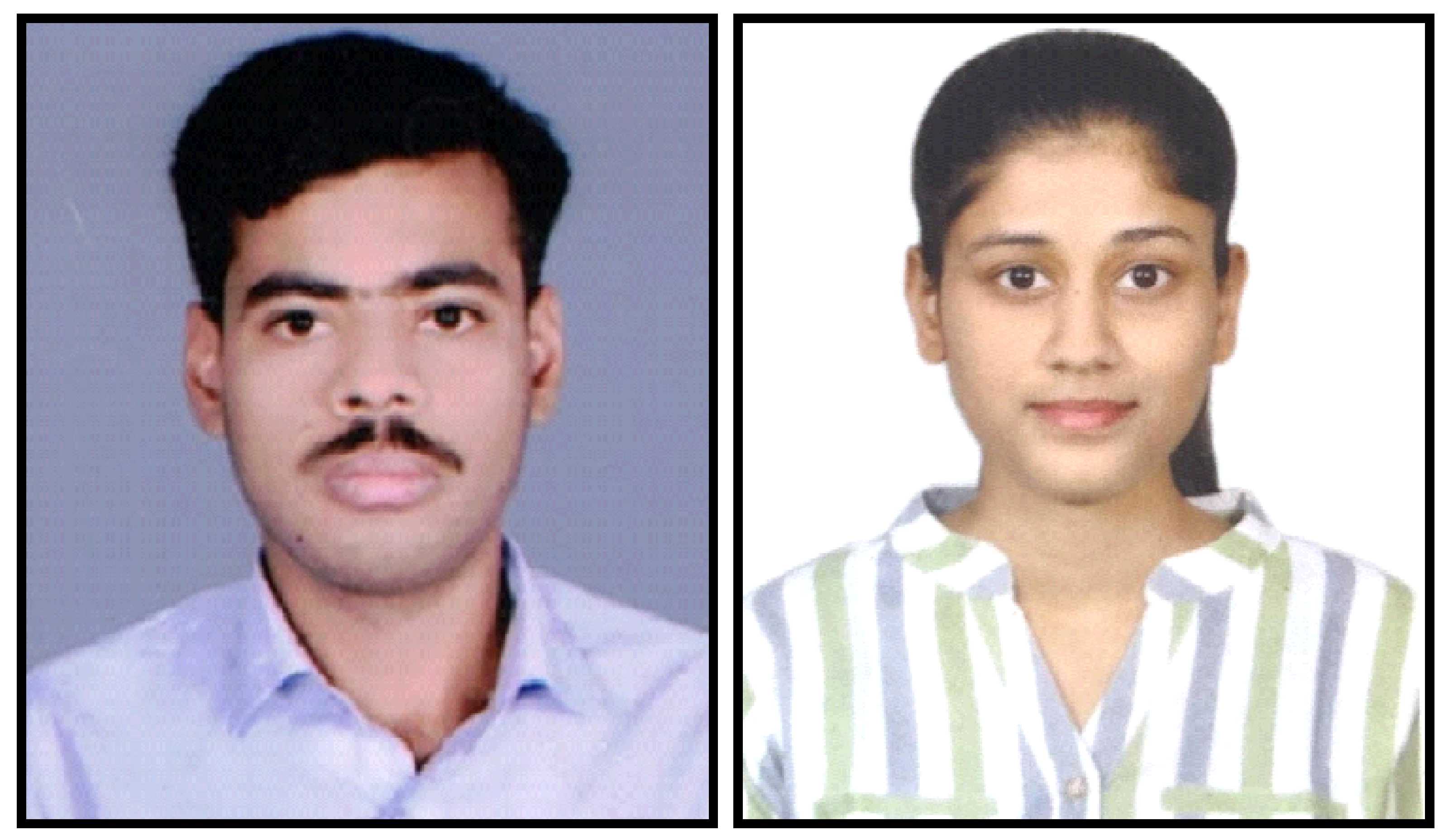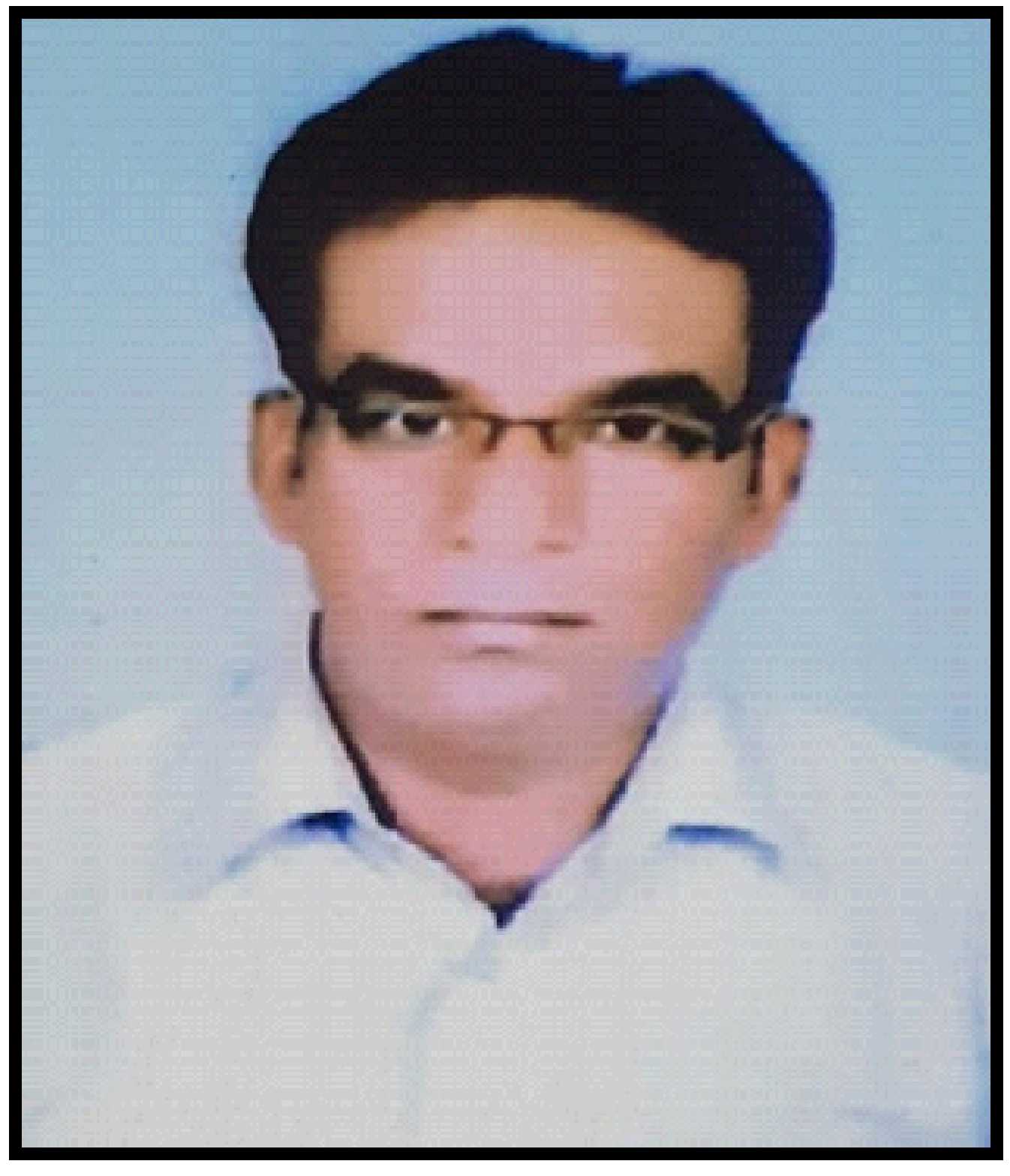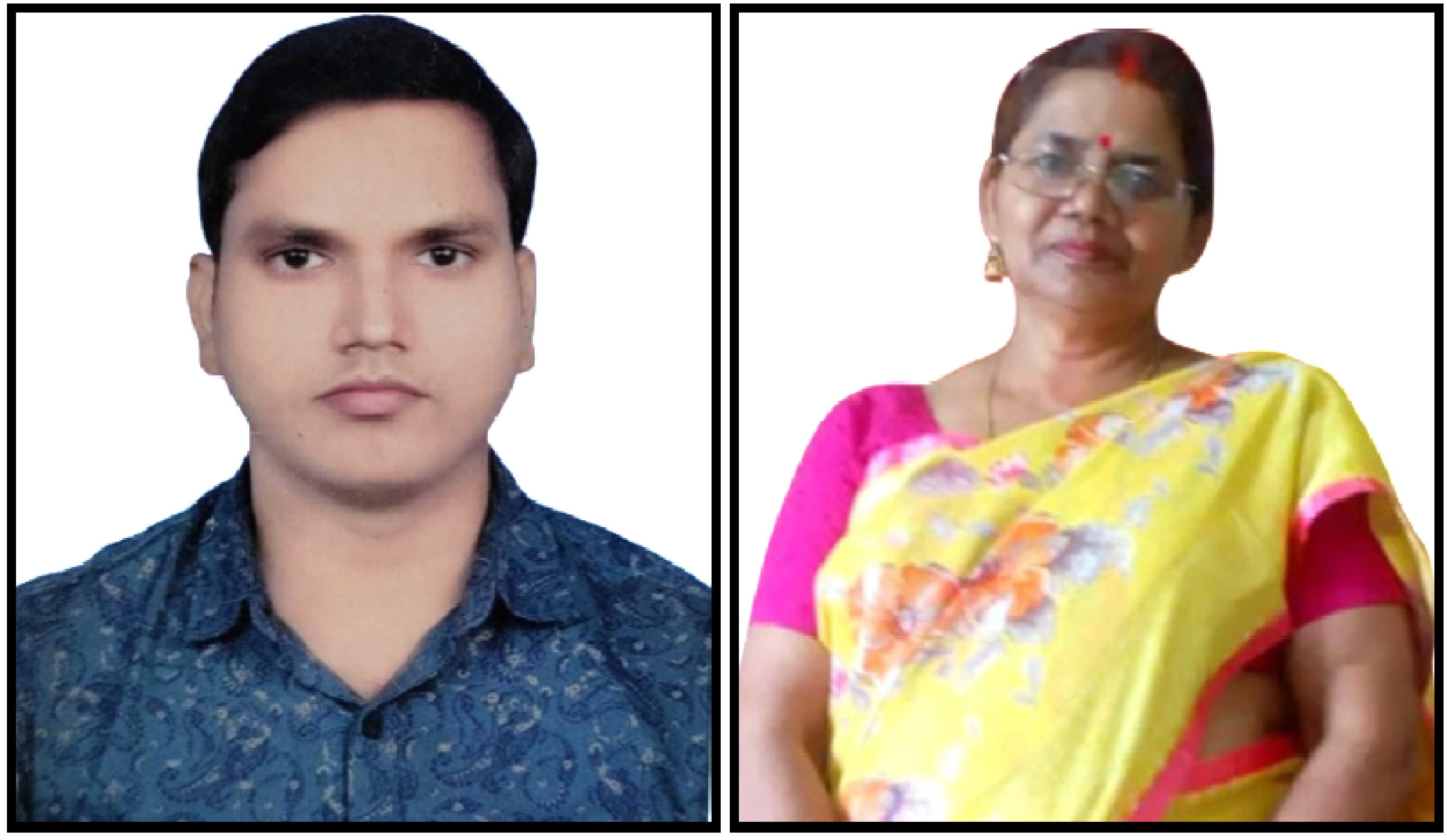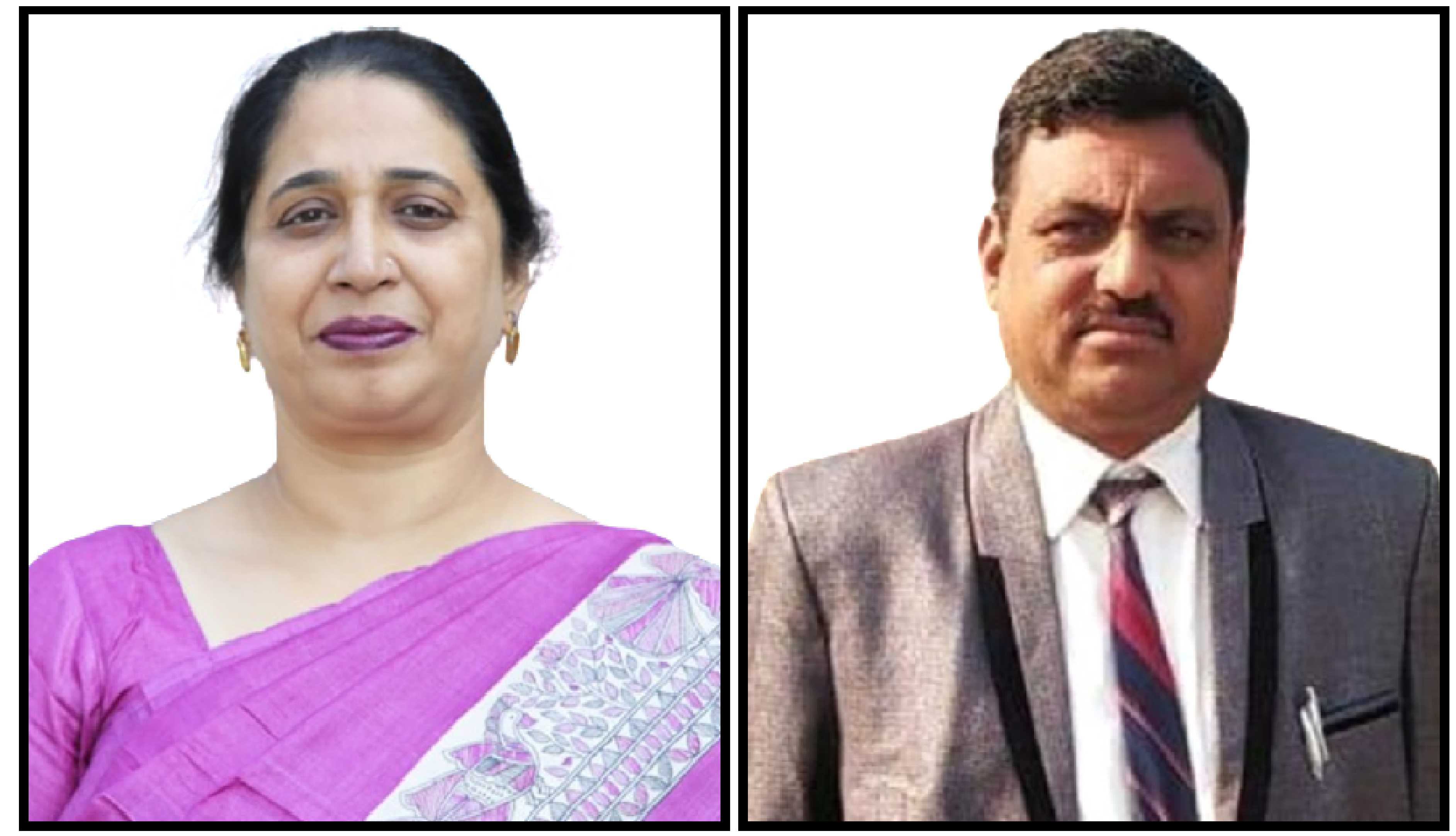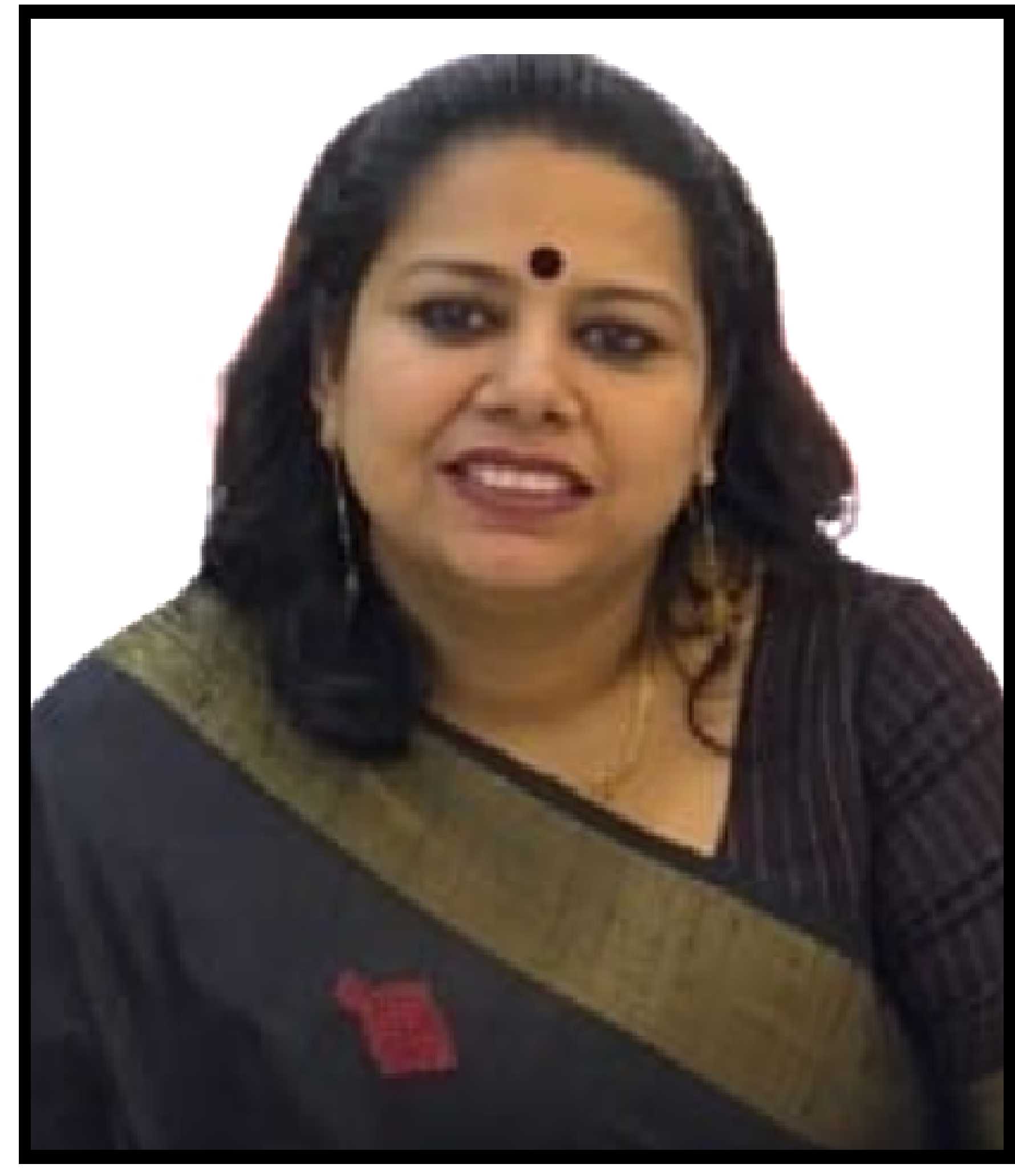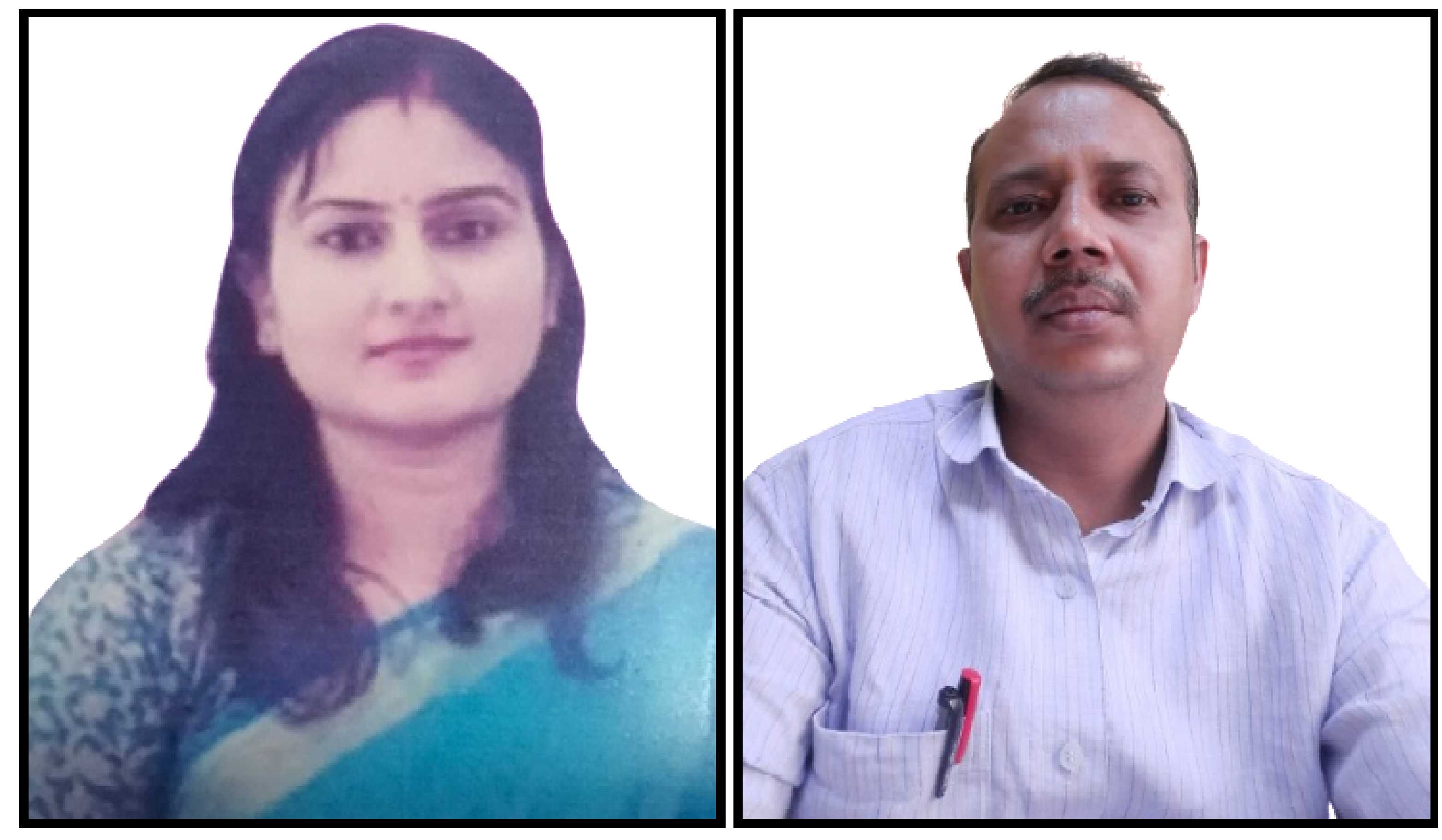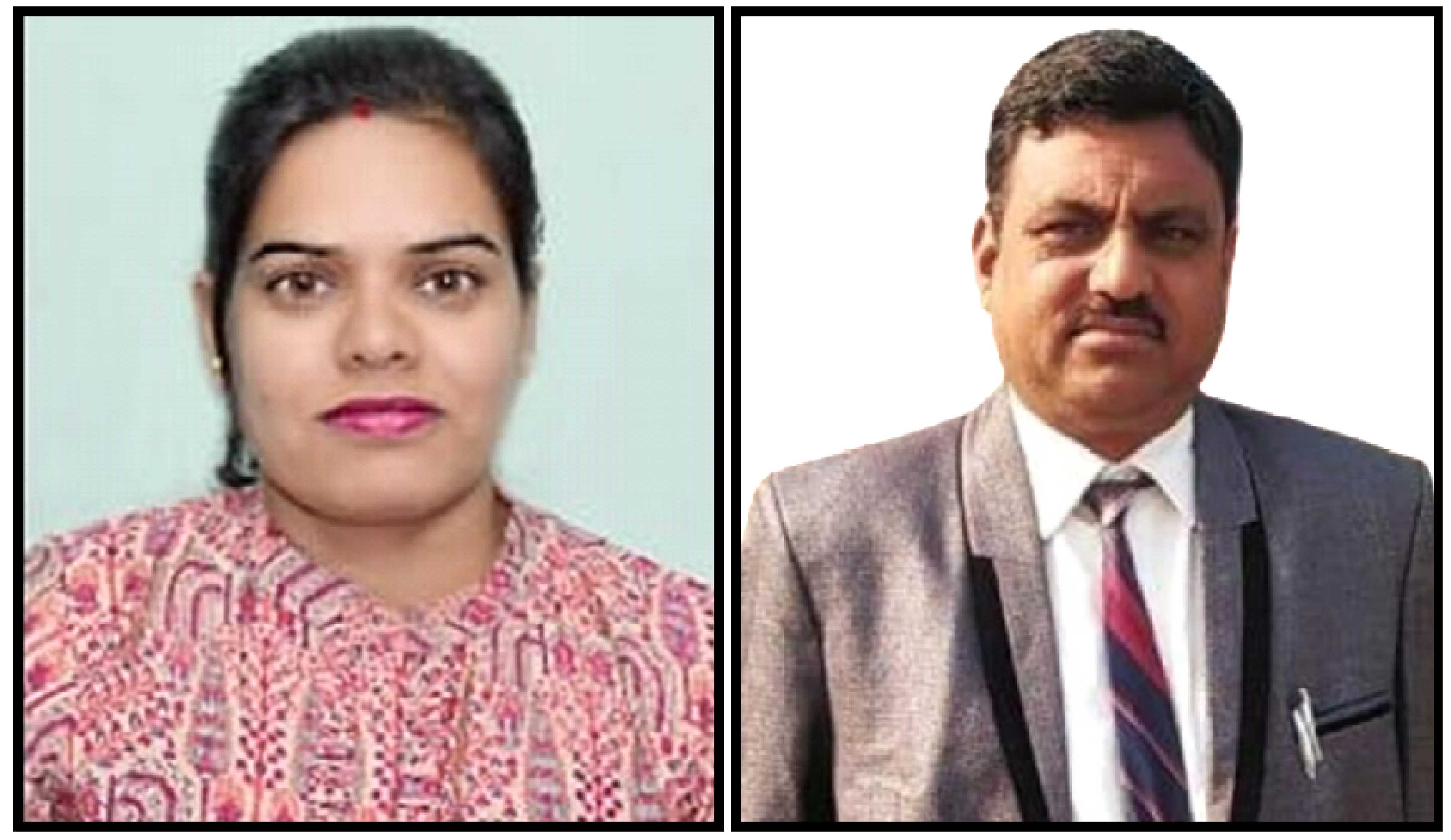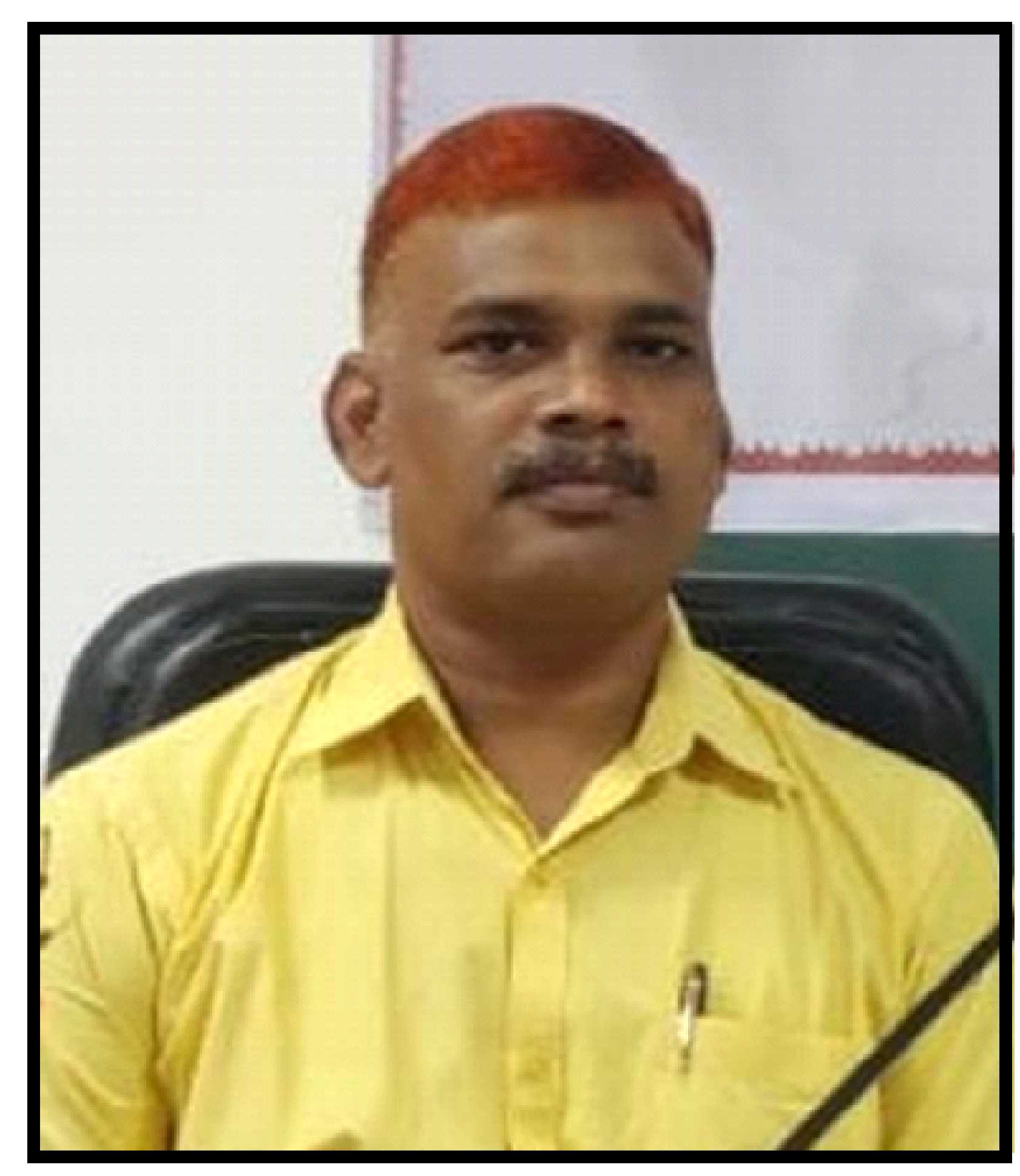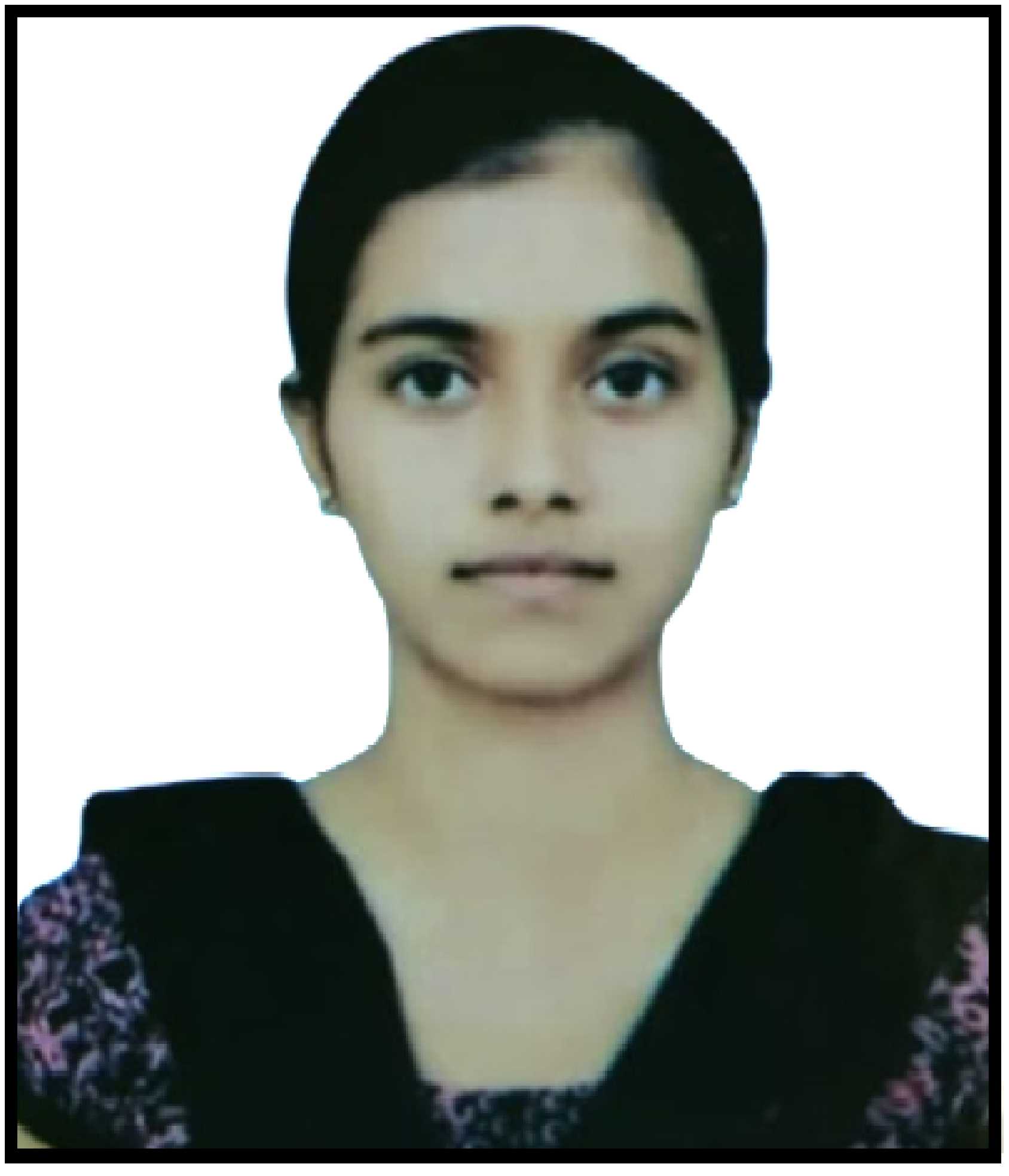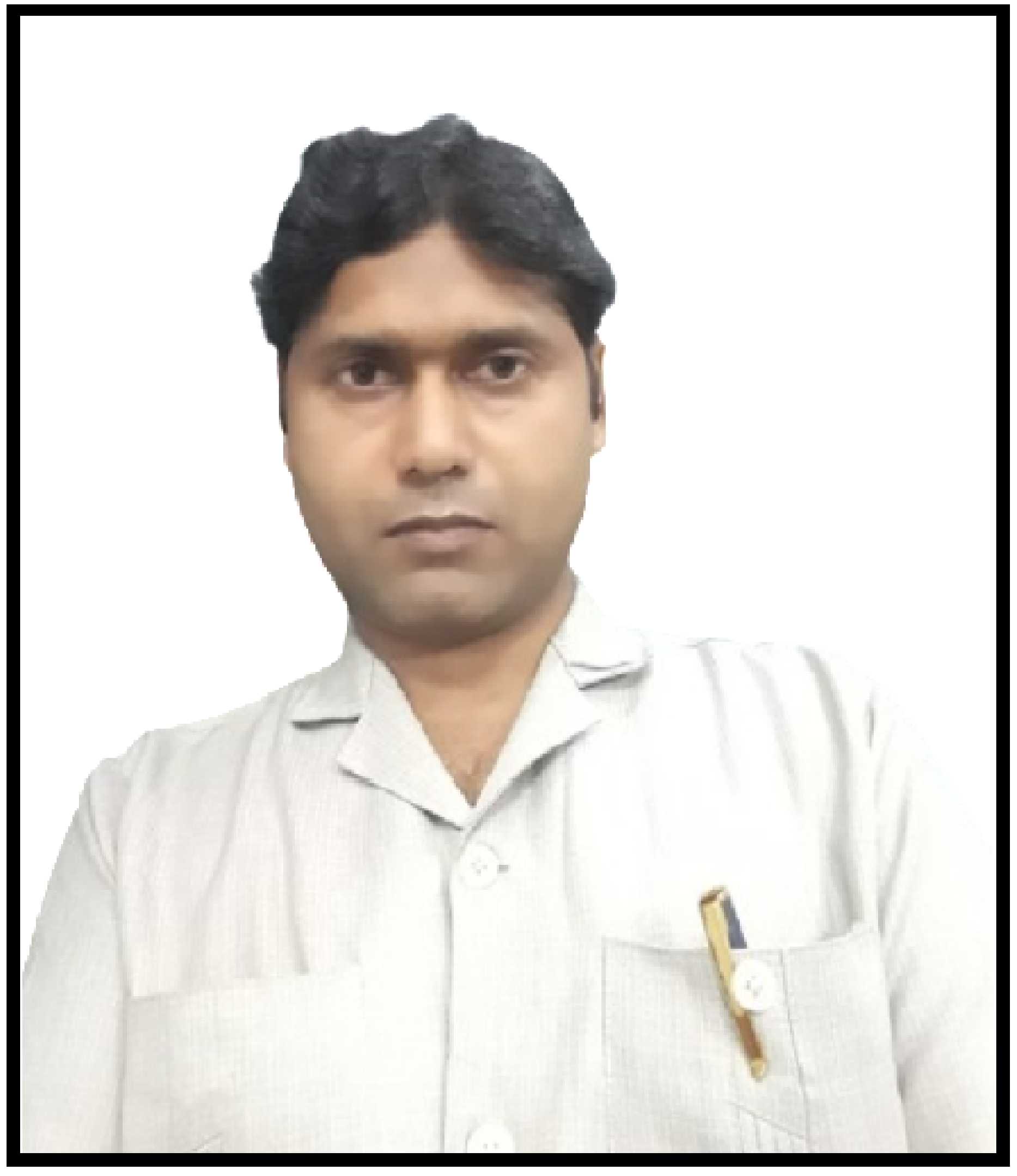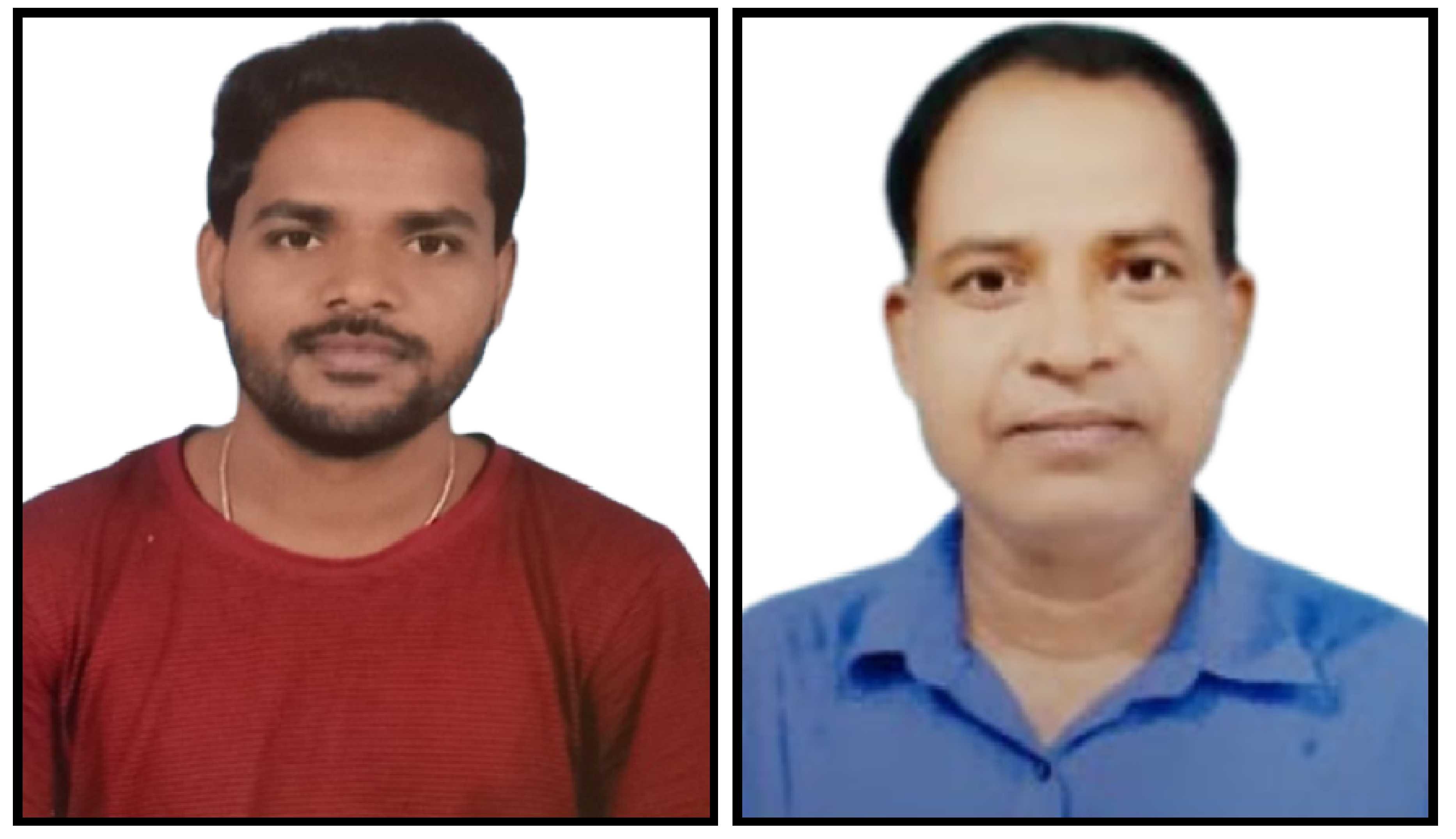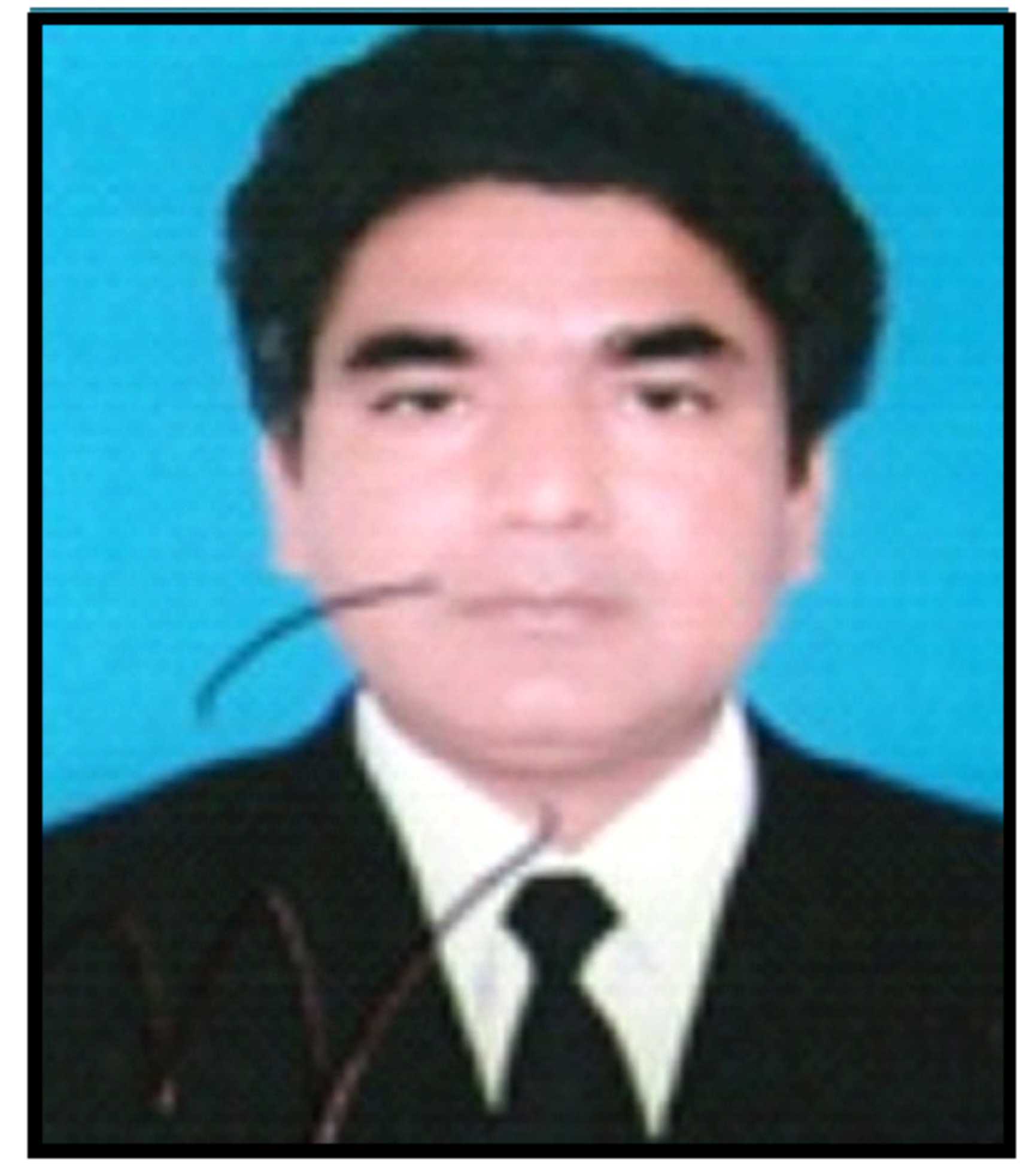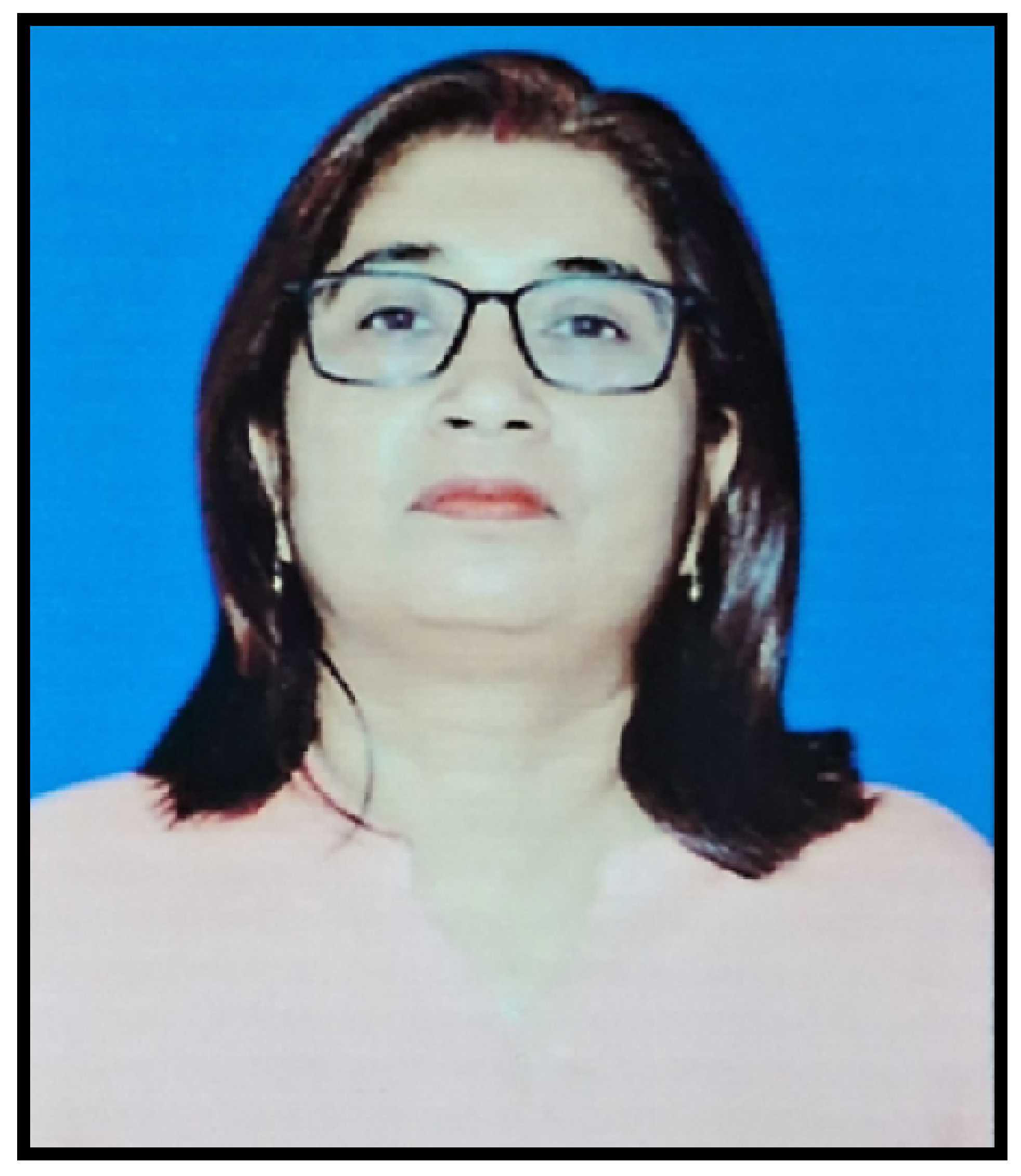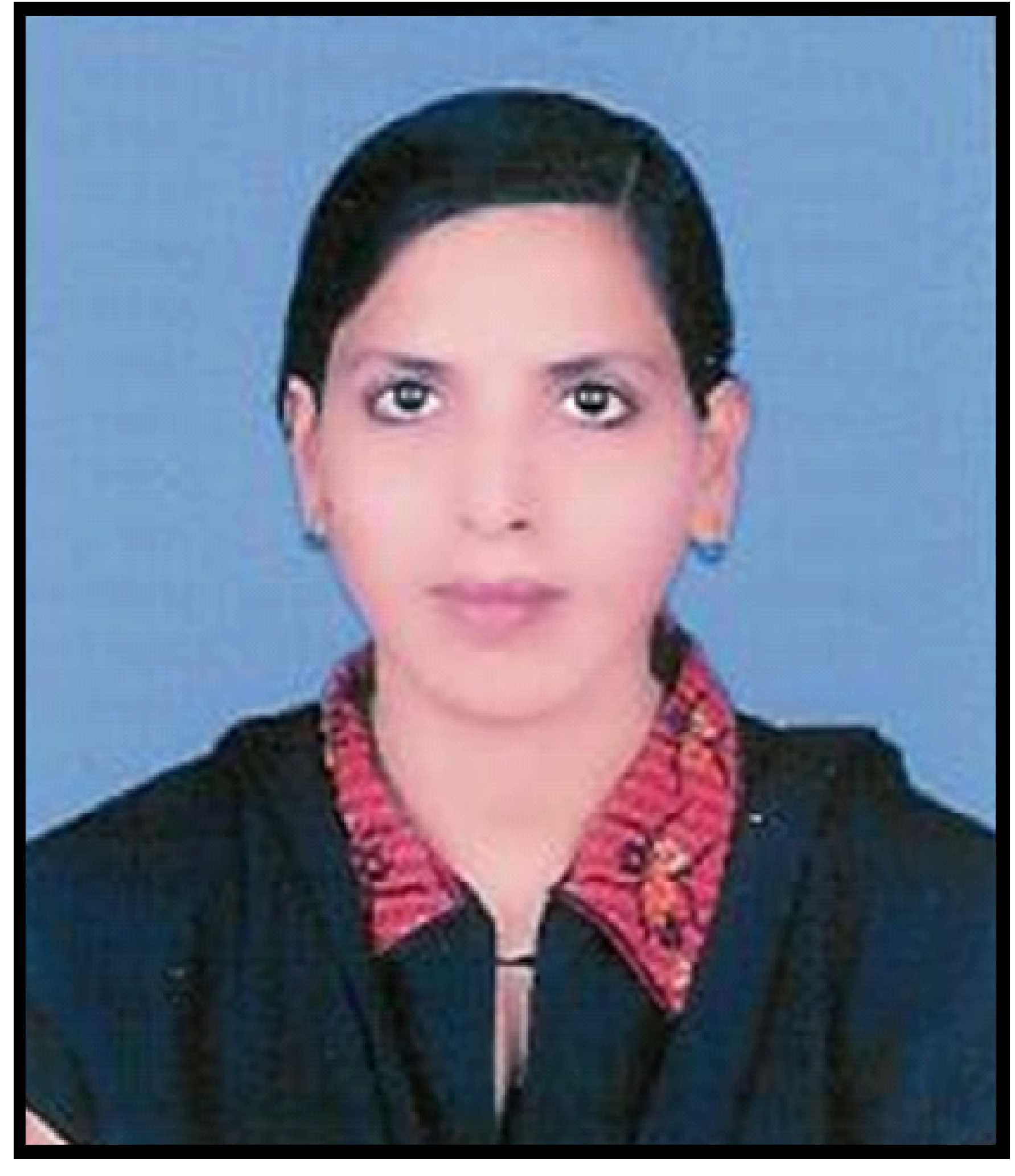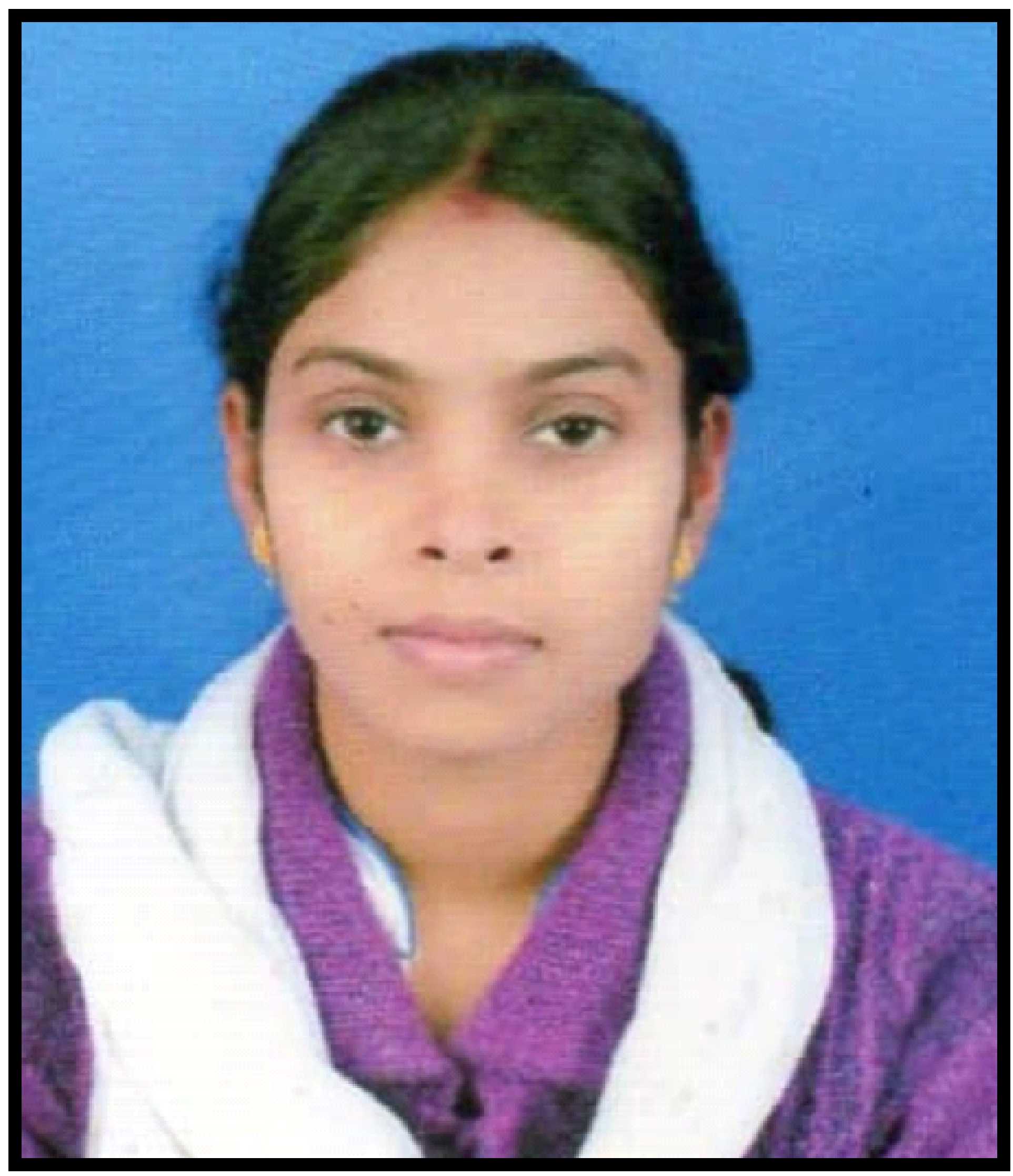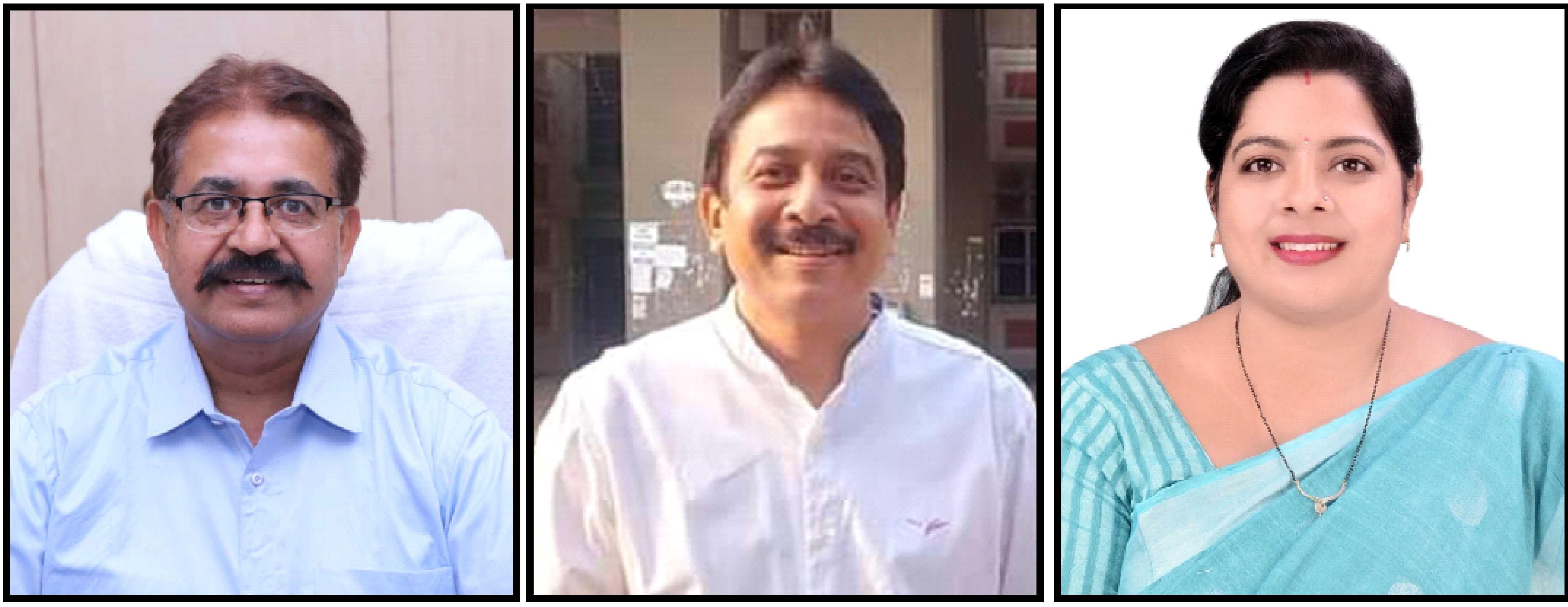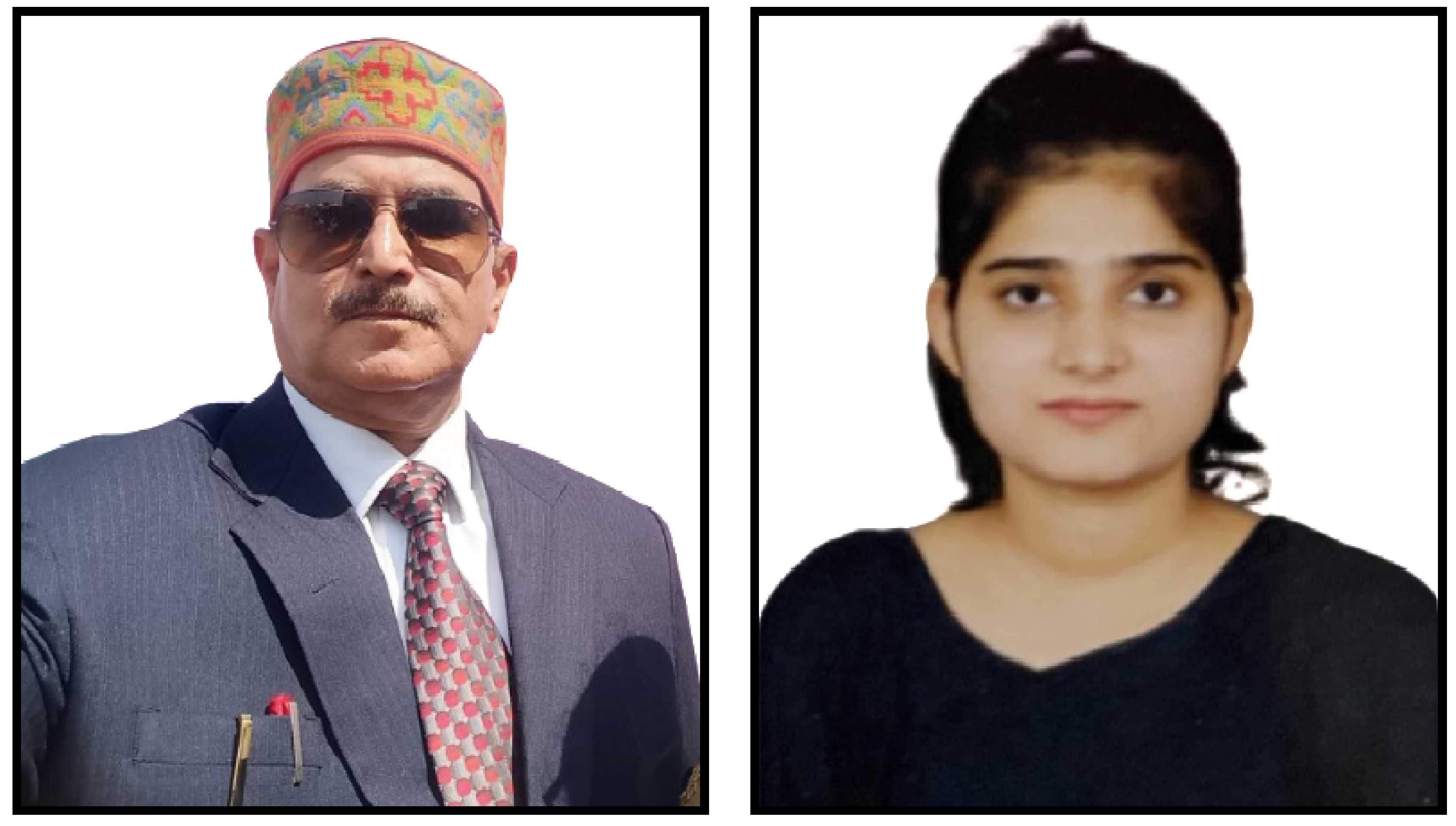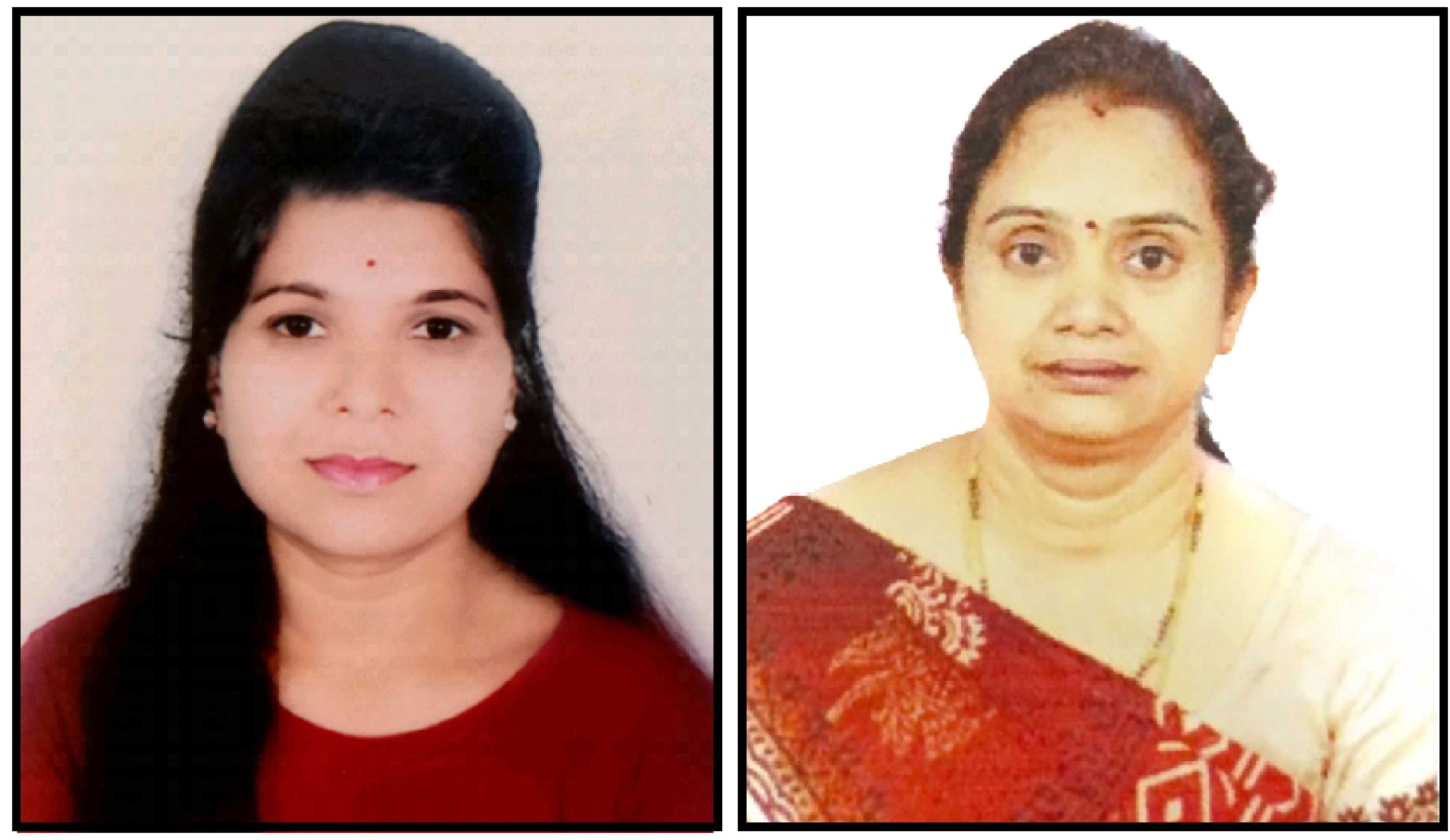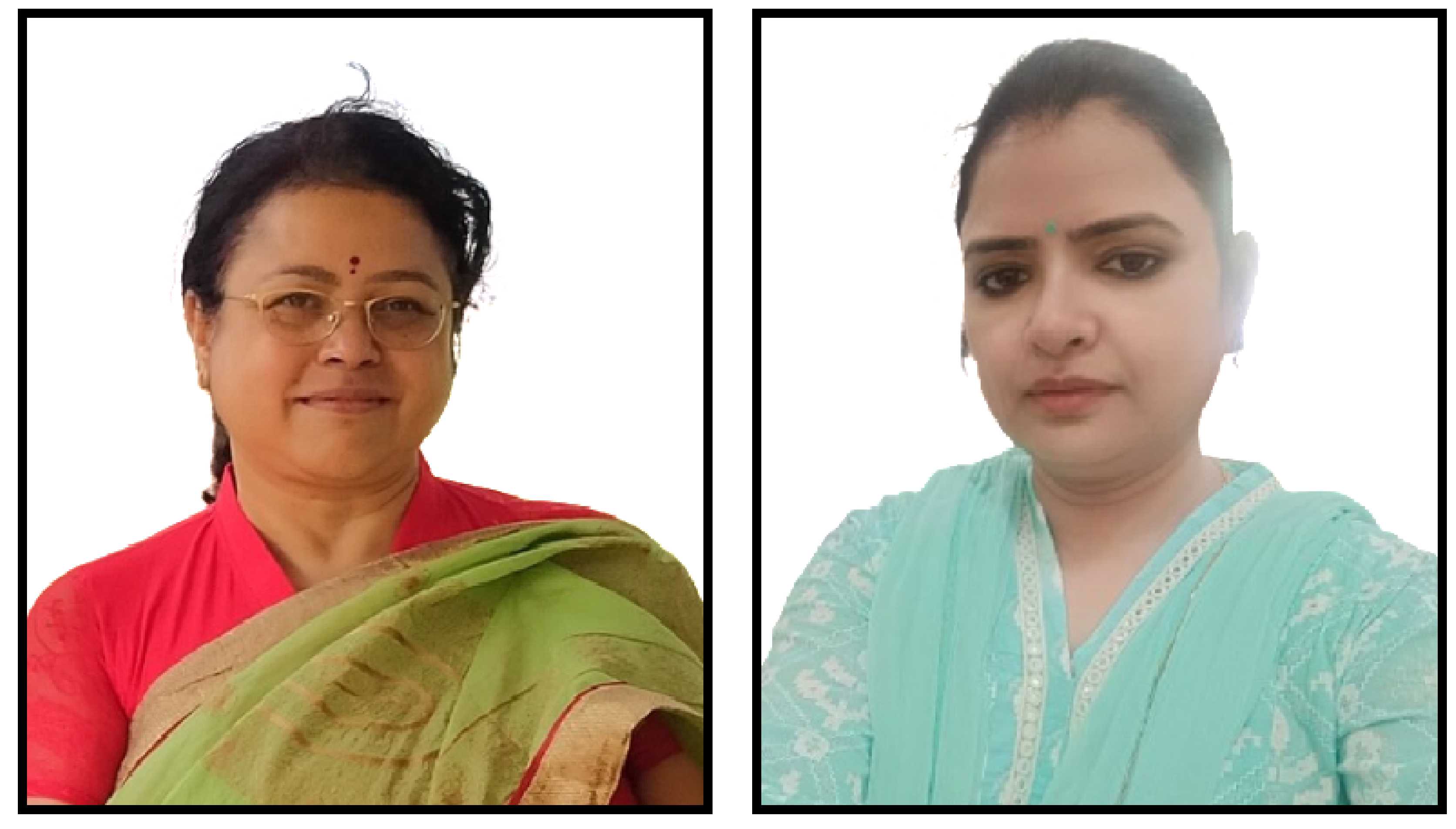- Call Us: +91 9425210308
- Email Us: shodhsamagam1@gmail.com
- RNI : CHHBIL/2018/77892
- ISSN : 2581-6918 (Online), 2582-1792 (Print)
Archieved Data
Publishing Year : 2024
Read Abstract
India has a long history of political and cultural ties with different countries of the world. It has always played a crucial role in expanding its domain in every sphere - political, social, cultural, and economic and so on. It has believed in Reformation, Performance and Transformation. India has evolved as a competent country to establish peace and stability with the neighboring countries. India’s continuous ability in developing strong relations with other countries has made its position as one of the strongest country in the world. This paper will focus on the shift of the foreign policy strategy in the Modi era with special reference to the West Asian countries, centering attention towards STU countries i.e., Saudi Arabia, Turkey and United Arab Emirates. The STU countries form a prime position among the other West Asian countries. From many past decades a good relation has been developed between India and STU countries. The paper will deal with the geo-political and strategic relevance, crucial relationship between India and STU countries, how they build importance for each other and the grand design for the future. Further, this paper will also cover the respective contributions of UPA and BJP, the two political parties which have played an important role in shaping Indian politics and how the latter proved to be more efficient in the task of building a stronger relationship with the STU countries.
Read Keyword
Reformation, Performance, Transformation, Geo-political, Cultural.
Read Reference
1. Azmi, R. (2006). GCC ‘looks east’: Saudi Arabia’s engagements with India. India Quarterly, 62(4), 124–151. doi:10.1177/097492840606200406, Assess on 25 March, 2024.
Read Abstract
समाज के निर्माण में महिलाओं की भूमिका प्रमुख है। महिलाओं की स्थिति में समय-समय पर देश काल के अनुसार परिवर्तन होता रहा है। वर्तमान भारतीय समाज में अनेक बदलाव हुए है जिनका महिलाओं की स्थिति में भी कई बदलाव आये है तथा गरीब महिलाओं पर इसका अधिक प्रभाव पड़ा, क्योंकि सैकड़ों वर्षों की परतन्त्रता की वजह से भारतवर्ष संसार के गरीब देशों में से एक है। भारतीय समाज की परम्परागत व्यवस्था में महिलायें आजीवन पिता, पति और पुत्र के संरक्षण में जीवन-यापन करती रही हैं। भारतीय संविधान में पुरूषों एवं महिलाओं को समाज दर्जा और अधिकार दिये जाने के बावजूद इस तथ्य से इंकार नहीं किया जा सकता कि विकास और सामाजिक स्तर की दृष्टि से महिलायें अभी पुरूषों से काफी पीछे हैं। भारतीय समाज में महिला आज भी कमजोर वर्गों में शामिल है। महिला परिवार की आधारशिला है और सामाजिक विकास बहुत कुछ उसी के सद्प्रयासों से सम्भव है। स्त्रियां ही संतति की परम्परा में मुख्य भूमिका निभाती हैं फिर भी प्राचीन समाज से लेकर आधुनिक कहे जाने वाले समाज तक स्त्रियां उपेक्षित ही रही हैं। उन्हें कम से कम सुविधाओं, अधिकारों और उन्नति के अवसरों में रखा जाता रहा है, इसी कारण महिलाओं की परिस्थिति अत्यन्त निचले स्तर पर है।
Read Keyword
भारतीय समाज, सामाजिक समस्याएं, शिक्षा, महिला, विवाह, राजनीति.
Read Reference
1. केलकर, गोविन्द (1881) इम्पैक्ट आफ ग्रीन रिवोल्यूशन आन वीमेन्स वर्क पार्टीसिपेशन एण्ड सैक्स, सेन्टर फॉर पोलिसी रिसर्च, नई दिल्ली, पृ. 152।
Read Abstract
मनोवैज्ञानिक कारक आपस में एक दुसरे को किसी न किसी प्रकार से प्रभावित करते हैं। विद्यार्थी के सर्वांगीण विकास हेतु शिक्षक को बाल मनोविज्ञान से परिचित होना आवश्यक है । प्रस्तुत शोध में संवेगात्मक बुद्धि का सृजनात्मकता एवं शैक्षिक उपलब्धि पर पड़ने वाले प्रभाव का अध्यययन किया गया है। प्राप्त निष्कर्षों के अनुसार संवेगात्मक बुद्धि का सृजनात्मकता पर धनात्मक प्रभाव पाया गया। किसी छात्र की संवेगात्मक बुद्धि अधिक हो तो उसे सृजनात्मक कार्यों की ओर प्रेरित किया जा सकता है। किसी कारणवश उच्च संवेगात्मक बुद्धि वाले विद्यार्थी की शैक्षिक उपलब्धि संतोषप्रद न हो तो संभावित कारणों का पता लगाकर तथा संवेगात्मक बुद्धि के विकास द्वारा समस्या का समाधान किया जा सकता है।
Read Keyword
मनोविज्ञान, संवेगात्मक, बुद्धि, विद्यार्थी.
Read Reference
1. Tripathi, Lokesh,(2018): “Samvegatmak Budhhi ke Sandarbh me vidyarthion ki Srijnatmkta evam Shaikshik uplabhdhi ka adhyayan” IOSR -JRME, Vol.-8, Issue-6, p. 65.
Read Abstract
Utilizing YouTube as a platform for promoting health schemes through advertisements has proven to be a highly effective method for reaching the intended audience. These advertisements play a crucial role in educating, creating awareness, and disseminating information about the advantages of various health schemes. Notably, Ayushman Bharat advertisements are featured on the YouTube channels of both the Press Information Bureau (PIB) and Ayushman Bharat National Health Authority (AyushmanNHA). This analytical study focuses on assessing the content and effectiveness of these YouTube advertisements from both channels. The investigation includes a comparative analysis of viewer engagement metrics such as likes, comments, and views for each channel, accompanied by visually representative plots of the advertisements. By conducting content analysis on the top three videos from each channel, the study aims to evaluate the objectives and hypotheses. It identifies areas of strength and areas for improvement, offering insights that contribute to refining strategies. The goal is to ensure that crucial healthcare information is easily accessible to all, thereby contributing to enhanced healthcare outcomes for the population.
Read Keyword
Ayushman Bharat, Press Information Bureau (PIB), AyushmanNHA, Advertisement, YouTube, Health.
Read Reference
1. Burgess, J., and Green, J. (2009). YouTube: Online video and participatory culture. Jean Burgess and Joshua Green, p. 38-57.
Read Abstract
Secularism in Indian context means the state’s impartial behaviour towards any religion, which may also be put as that the state does not have any religion of its own. This principle finds place in the Indian constitution as well and is a part of ethos of the country. The philosophy of the secularism is influenced by the principle of ‘Sarva Dharma Sambhava’, unlike western secularism which only emphasis about the separation of the church and the state. Indian secularism in essence is more about a positive approach which is inclusive of religious diversity and promotes harmony amongst the citizens. The country’s overall history ranging from ancient to medieval times have exhibited a culture of religious coexistence. Rulers like Asoka and Akbar advocated religious tolerance and Sufism and Bhakti movements have strengthened the secular values. Coming to the Indian national movement era, the efforts of great leaders like Gandhi and Nehru always reflected the secular ideals for the people of the country, and the same finds place in the constitution which through various articles and amendments till date, guarantee fundamental rights that protect the freedom and equality and there are various judicial pronouncements on the same. Like all good things in governance, secularism has its impediments, hindrances such as caste based politics; pseudo secular practises are few of them. In this research paper the author would like to explore more on the intricacies of secularism in India.
Read Keyword
Secularism, Religious Positive Secularism Neutrality, Fundamental Rights.
Read Reference
1. Basu, Durga Das. (2007) Commentary on the Constitution of India, Lexis Nesis, Wadhwa, Nagpur, p. 400.
Read Abstract
Read Keyword
समाज, छत्ताीसगढ़, महिला, स्थिति, सेवा.
Read Reference
1. भूषण, केयूर (2002) छत्तीसगढ़ के नारी रत्न, जनचेतना प्रकाशन ,रायपुर, पृ. 50- 60।
Read Abstract
In a country like ours, where three-fourths of its total population lives in villages, the all-round development of rural areas acquires a significant importance. In the Indian context Rural Development can be defined as “integrated development of the area and the people through optimum development and utilization (and conservation where necessary) of local resources-physical, biological and human-and by bringing about necessary institutional structural and attitudinal changes by delivering a package of services to encompass not only the economic field i.e., agriculture allied activities rural Indus-tries but also establishment of required social infrastructure and services in the area of health and nutrition sanitation housing, drinking water and literacy, with the ultimate objective of improving quality of life of rural poor and the rural weak. Thus rural development refers to the process of improving living conditions providing minimum needs increasing productivity and employment opportunities and developing potentials of rural resources through integration of spatial functional and temporal aspects. In view of stupendous task involved in the process of rural development, Government industries, voluntary, agencies, institutions, banks, Christian missionaries, business houses, trade unions etc. are increasingly getting involved in various developmental endeavors in rural areas. In this context the role of voluntary agencies assumes crucial importance and of late they have acquired greater significance than before.
Read Keyword
Voluntary agencies, Anti-Poverty Schemes, Rural Development, Economic Regeneration.
Read Reference
1. Chowdhary, D. Paul (1985) Profile of Social Welfare and Development in India, New Delhi, M.N. Publishers & Distributors, p. 190. 3.
Read Abstract
भारत स्वतंत्रता प्राप्ति के अमृत महोत्सव वर्ष के भीतर हमारे गणतंत्र ने वास्तविक संघीय स्वरूप ग्रहण कर लिया है। समसामयिक परिस्थितियों के मुद्दे नजर यह कहा जा सकता है कि भारत में गठबंधन राजनीति के सबल होने से देश की संघीय व्यवस्था में विद्यमान कुरीतियाँ अब कम होने लगी है। केन्द्र सरकार के वर्चस्व वादी रवैये पर न सिर्फ अंकुश लगा है बल्कि केन्द्र सरकार के अहम निर्णयों और नीतिगत फैसलों में राज्य सरकारों की भागीदारी अनिवार्य रूप से बढ़ी है। अब क्षेत्रीय प्रतिनिधित्व भी केन्द्र सरकार की दिशा-दशा तय करने में महत्वपूर्ण भूमिका निभाने लगे हैं। इसका परिणाम यह हुआ है कि केन्द्र तथा राज्य सरकार एक-दूसरे का प्रतिद्वन्दी न होकर एक-दूसरे के पूरक हो गये हैं। केन्द्र-राज्य संबंधों के मध्य चिरकाल से चले आ रहे बाधक तत्व जैसे राज्यपाल के पद अनुच्छेद 356 अखिल भारतीय सेवाएँ जैसे मुद्दे अब या तो नेपथ्य में चले गये हैं या उनकी अब कोई प्रासंगिकता ही नहीं रह गयी है। हालांकि गठबंधन राजनीति को मर्यादा से अधिक आगे ले जाने का कुछ दलों का हठी प्रयास कई बार केन्द्रीय सरकार की न्यूनतम एवं अनिवार्य विषयों पर निर्णय लेने की क्षमता को भी कुन्द कर देता है। इस प्रकार एक ऐसी अनिर्णय की स्थिति केन्द्रीय स्तर पर उत्पन्न होती है जो किसी भी स्थिति में देश के सामाजिक-आर्थिक विकास एवं राजनीतिक कुटनीतियों के संचालन के लिए उपयुक्त नहीं मानी जा सकती है। इस प्रकार की कुछ विकृतियों के बावजूद भारतीय संघवाद लगातार एक के बाद दूसरी सफलता की ओर अग्रसर है। इसका प्रमुख कारण यह है कि हमारे यहाँ संघवाद केवल केन्द्र तथा राज्य स्तर पर शक्तियों का विभाजन ही नहीं, अपितु बहुलवादी समाज की राष्ट्रीय जीवन पद्धति भी है। इसका स्वरूप बहुलवादी है प्रवृत्ति समायोजन वादी है।
Read Keyword
संघवाद, गठबंधन सरकार, भारतीय संविधान, बहुलवादी समाज, राष्ट्रीय दल, न्यायिक समीक्षा.
Read Reference
1. Kothari, Rajni (1964) The Congress System in India, Asian Survey, Vol- 4, No. 12, December, p.1161-1173.
Read Abstract
This article explores the intricate relationship between education, Indian culture, and philosophy, focusing on their intersection and impact on the holistic development of individuals and society. Beginning with an overview of education in ancient India it highlights the Gurukul system’s holistic approach to learning and character formation. The influence of Indian culture on education is examined emphasizing the integration of physical mental emotional and spiritual dimensions.Indian philosophy forms the basis of education directing both educators and students toward self-discovery and enlightenment.Values and ethics play a central role in education instilling virtues such as honesty integrity and compassion in students. Teachers are revered as mentors and guides inspiring students to reach their full potential. Cultural integration in the curriculum fosters a sense of pride and appreciation for India’s cultural diversity. Pedagogical practices are influenced by Indian philosophy emphasizing experiential learning and critical thinking.Despite current challenges like unequal education access and outdated curricula, there are many opportunities for innovation and reform. Initiatives such as inclusive and values-based education are transforming the educational landscape aligning it with Indian cultural and philosophical principles. In conclusion education in India is ingrained in its cultural heritage and philosophical traditions with the potential to foster wisdom compassion and social responsibility in individuals and society.
Read Keyword
Integration, Education, Spirtitual, Indian Cutlure, Philasophy, Heritage.
Read Reference
1. Avinashalingam, TS. (1974) Educational philosophy of Swami Vivekananda, 3rd ed., Coimbatore, Sri Ramakrishna Mission Vidyalaya. p. 45, 47-48.
Read Abstract
Among geography’s scientific attributes is the study of human-natural interaction. A large amount of education is dedicated to geography. In Uttar Pradesh geography is provided as an elective for secondary school students. This research examines secondary school geography teachers’attitude viewpoints and personal experiences in relation to the academic field. This study uses both the qualitative research strategy and the semi-structured interview method. A semi-structured interview framework is utilized for the study topic. After the data are separated into seven categories the analysis is completed through the interpretations. Following a thorough examination of the research outcomes in relation to their thematic context a series of recommendations have been proposed. The present investigation offers valuable insights into the perspectives and pedagogical practices of geography educators regarding the instruction of geography in secondary schools within the state of Uttar Pradesh.
Read Keyword
Teaching Geography, Experience, An Attitude, Pedagogy.
Read Reference
1. Artvinli, E. (2017). What is Innovative Geography Teaching? A Perspective from Geography Teachers, Journal of Education and Training Studies, 5, (6), pp. 9-23.
Read Abstract
The National Oceanic and Atmospheric Administration (NOAA) and other research organizations have produced independent analyses that closely align with NASA’s analysis.According to worldwide data the Earth’s temperature in 2023 increased by around 2.45 degrees Fahrenheit (1.36 degrees Celsius) compared to the pre-industrial average temperatures measured between 1850 and 1900. It is worth noting that atmospheric aerosol particles particularly fine dust held at high altitudes play an important role in regulating the planet’s thermal equilibrium by collecting solar radiation and re-emitting heat that would otherwise escape into space. This occurrence has important consequences for our knowledge of how the Earth’s climate works. These two impacts can counterbalance one another depending on the kind of dust the season and the time of day. For example a coating of dust may tend to warm the winter and cool the summer. Ozone and water vapour both emit UV light that significantly affects the atmosphere. Power plants greenhouse gas emissions population increase deforestation the transportation sector and the degradation of wet land are the main causes of global warming. Global warming has implications and consequences on many facets of existence. The weather seas acidification forest fires ozone depletion local climate change glacier retreat and disappearance agriculture water shortages and human health are all affected by global warming.A projected 2°C rise in global temperatures has been found to potentially lead to a decline in rice production ranging from 0 to 75 tons per hectare. Similarly a 0.5°C increase in winter temperatures could result in a decrease in wheat output between 0 and 45 tons per hectare. Research has indicated that these outcomes are likely consequences of global warming. This paper examines the underlying causes of global warming its far-reaching impacts and the strategic measures being employed at the international level to mitigate its effects.
Read Keyword
Green house, Global Warming, Oxygen, Climate Change, Pollution, Agriculture.
Read Reference
1. Mauri, S. and Pelto, K. (2007) Recent retreat of north-cascade glaciers and changes in north cascade stream flow. North Cascade Glacier Climate Project.
Read Abstract
नारी में गाँधी जी ने अहिंसा वृत्ति के दर्शन किये थे। उन्होंने कहा था‘‘स्त्री में हिंसा की जीती जागती मूर्त्ति है। अहिंसा का अर्थ है असीम प्रेम और असीम प्रेम का अर्थ है कष्ट सहने की अपार शक्ति। पुरुष की जननी स्त्री के सिवा और किसी में यह शक्ति प्रकट नहीं हो सकती है। स्त्री जो प्रेम अपने बच्चे से करती है अगर यह प्रेम सारी मानव जाति को दे और यह भूल जाय कि वह कभी भी पुरुष के भोग की चीज थी या भविष्य में हो सकती है तो उसे पुरुष की माता उसकी निर्मात्री और पथ प्रदर्शिका का गौरवपद प्राप्त हो जायगा। युद्ध में फंसी हुई दुनिया अमृत की प्यासी है। उसे शान्ति की कला सिखाने का काम स्त्री का ही हैं।‘‘ अहिंसा विशेष तौर पर स्त्रियों का ही हथियार है’’-ऐसा उनका मानना था। इसी संदर्भ में उन्होंने बताया ‘‘अहिंसा के क्षेत्र में पुरुष से स्त्री ज्यादा खोज भी कर सकती है और ज्यादा साहस पूर्ण कदम भी उठा सकती है। मेरा विश्वास है कि जैसे पशु- सुलभ साहस में पुरुष स्त्री से आगे हैं वैसे ही आत्मत्याग के साहस में स्त्री पुरुष से कहीं बढ़कर है।’’ गाँधी जी ने बताया था कि - ‘‘अहिंसा की लड़ाई में कष्ट-सहन ज्यादा से ज्यादा करना पड़ता है और स्त्रियों से ज्यादा शुद्ध और ऊँचे दरजे का कष्ट-सहन और कौन कर सकता है?’’गाँधी जी ने स्त्रियों के साहस तथा धैर्य का परिचय देते हुये कहा था- ‘‘स्त्रियों ने गैर कानूनी नमक तैयार किया, विदेशी कपड़ो की दुकानों और शराब की दुकानों पर उन्होंने धरना दिया और बेचने और खरीदने वालों दोनों को उनके कुकायों से विरत करने की कोशिश की। अपने दिल में साहस और दया लेकर वे शराबियों के पीछे-पीछे उनके अड्डों तक पहुँचती थीं। वे जिस तरह जेल गयीं और उन्होंने लाठियों की मार जिस तरह सह ली उसकी बराबरी विरले ही पुरुष कर सके।’’ स्त्री शक्ति का विवेचन करते हुये उन्होंने बताया ‘‘स्वराज्य की प्राप्ति में भारत की स्त्रियों का उतना ही हिस्सा होना चाहिये जितना पुरुषों का। यह भी संभव है कि इस शांत लड़ाई में स्त्री पुरुष से बाजी मार ले जाय और उसे कोसों पीछे छोड़ दे।’’गाँधी जी मानते थे कि स्त्री जब कोई कार्य युद्ध और सही भावना से करती है तो पहाड़ों को हिला देती है।
Read Keyword
नारी प्रथा, वैदिक साहित्य, स्त्री-पुरूष समानता व सहभागिता.
Read Reference
1. तेन्दुलकर, डी. जी. (2016) महात्मा: लाइफ ऑफ एम. के. गाँधी, प्रकाशन विभाग दिल्ली, भारत सरकार।
Read Abstract
आधुनिक शिक्षा लॉर्ड टी.बी. मैकाले के 1835 के मिनट्स के साथ शुरू हुई थी और 1937 तक उसमें कई उतार-चढ़ाव आए। महात्मा गांधी ने मूक सामाजिक परिवर्तन लाने ग्रामीण-शहरी विभाजन-को कम करने गरीब छात्रों में आत्मविश्वास पैदा करने कार्य एवं पेशेगत शिक्षा को प्रोत्साहित करने और छात्रों के नैतिक बल के विकास के लिए बुनियादी शिक्षा या नई तालीम के प्रति एक व्यापक नजरिया अपनाने की पैरवी की थी लेकिन अनियमित शुरुआत के साथ बुनियादी शिक्षा की योजना पूरे देश में लागू नहीं की जा सकी। सन् 1947 के बाद शिक्षा नीति के निर्माताओं ने अपना ध्यान पहले विश्वविद्यालीय शिक्षा (1948-49) फिर माध्यमिक शिक्षा (1951-53) और फिर समग्र शिक्षा पर केंद्रित किया। राष्ट्रीय शिक्षा आयोग ने (1964-66) में कई योजनाओं की पेशकश की जो 1968 और 1986 की राष्ट्रीय शिक्षा नीति की नींव बनीं लेकिन राष्ट्रीय शिक्षा नीति में गांधीजी के इन शब्दों को भुला दिया गया ‘‘बुनियादी तालीम का यह कार्य मेरे जीवन का आखिरी काम है। यदि ईश्वर की कृपा से यह काम पूरा हो जाता है तो हिंदुस्तान पूरी तरह से बदल जाएगा।’’इन शब्दों को आज भी हमारी सरकार ने भुला दिया लगता है। वर्तमान में जो सुधार लाए जा रहे हैं वे मूल्य आधारित नहीं हैं और उनकी उपयोगिता भी नाममात्र की है। इस आलेख में शैक्षिक सुधारों पर विहंगम दृष्टि डाली गई है और यह पता लगाने का प्रयास किया गया है कि हम किस दिशा में जा रहे हैं।
Read Keyword
शैक्षिक सुधार, राष्ट्रीय शिक्षा नीति, शिक्षक प्रशिक्षण, भारतीय संविधान, प्राथमिक शिक्षा, मूल्यांकन.
Read Reference
1. फायड मैनन, टी.एल. (2006), द वर्ल्ड इज फ्लैट, पेंगुइन बुक्स, लंदन, पृ. 19-20।
Read Abstract
धारणीय विकास की अवधारणा वर्तमान में सर्वाधिक चर्चित और नवीन अवधारणा के रूप में स्वीकार की जा रही है। संयुक्त राष्ट्र ने वर्ष 2015 में संधारणीय विकास लक्ष्य (ैक्ळ) के अंतर्गत 17 लक्ष्य और 169 विशिष्ट लक्ष्य निर्धारित किए हैं जिनके प्राप्त करने की समय सीमा 2030 निर्धारित की गई है। वास्तव में धारणीय विकास की अधिक व्यावहारिक एवं वैज्ञानिक परिभाषा इसका विधि-विधान और मानवीय कृत्य-अकृत्य को हजारों वर्ष पूर्व जैन आगम में विस्तृतता के साथ स्थान दिया गया है किन्तु शिक्षाविदों ने देश से ही धारणीय विकास की अवधारणा का चयन न करके विदेशी विचारकों पर अधिक विश्वास किया तथा उनके द्वारा दिये गए विचारों को श्रेष्ठ तथा मूल मानते हुए उन्हे साहित्य में उच्च स्थान प्रदान कर उसी के समान व्यवहार करने का आव्हान किया जो उचित प्रतीत नहीं होता है। जैन धर्म विश्व के प्राचीन धर्मों में से एक है जिसके आगमों में जीवन के प्रत्येक पहलू पर बहुत ही विस्तार से अध्ययन कर स्थान प्रदान किया है। वर्तमान में भारतवर्ष में परंपरागत ज्ञान को मुख्यधारा में लाने का प्रयास किया जा रहा है। प्रस्तुत शोध पत्र के माध्यम से धारणीय विकास की भारतीय अवधारणा को जैन आगम के संदर्भ में प्रस्तुत किया गया है। यह अध्ययन शास्त्रार्थमीमांसा (व्याख्याशास्त्र) शोध प्रविधि पर द्वितीयक समंकों पर आधारित है जिसमें जैन, बौद्ध तथा हिन्दू धर्म ग्रंथों, टीकाओं, लेखों, पुस्तकों, शोधपत्रों, वेबसाइट आदि का अध्ययन किया गया है।
Read Keyword
जैन आगम, जैन धर्म, धारणीय विकास, एसडीजी, शाकाहार, भारतीय ज्ञान परंपरा.
Read Reference
1. अथर्ववेद, सायण भाष्य 11/4/9/24
Read Abstract
बेरोजगारी किसी भी देश के लिए एक भयावह समस्या है। बेरोजगारी का असर व्यक्ति के सेहत पर भी पड़ता है। हालिया शोध में यह सामने आया है कि यदि कोई व्यक्ति बेरोजगार है तो बेरोजगारी का प्रभाव उसके स्वास्थ्य पर परिलक्षित होता है और उसके स्वास्थ्य पर बेरोजगारी का नकारात्मक प्रभाव पड़ता है। आज भारत में भी बेरोजगारी एक प्रमुख समस्या के रूप में उभर चुकी है और वर्ष दर वर्ष बेरोजगार व्यक्तियों की संख्या में बढ़ोतरी होती जा रही है जो कि एक बहुत बड़ी चुनौती है। इस शोध में बेरोजगारी का अर्थ,बेरोजगारी के प्रकार,बेरोजगारी मापन की विधियां, बेरोजगारी से संबंधित अन्य अवधारणाएं एवं बेरोजगारी से संबंधित कई आंकड़ों पर चर्चा की गई है।
Read Keyword
बेरोजगारी दर, बेरोजगारी अनुपात, श्रम बल भागीदारी दर, श्रमिक जनसंख्या अनुपात, दीर्घकालीन बेरोजगारी, लघु एवं कुटीर उद्योग.
Read Reference
1. Ahuja, Ram. (1997) Social Problems in India. India, Rawat Publications, Jaipur, Rajasthan, p. 70-89.
Read Abstract
Nature’s three priceless gifts to humanity are air, water and soil. The most essential part on earth is water because it serves as the basic medium for the origin of life. At present due to rapid development, deforestation, and modern agricultural practices this life-giving component is under stress. River water is a pivotal natural resource for drinking. Over the last ten years, In the river water, remarkable changes have been introduced by human activity due to which many rivers in India are affected through poor quality of the water. The safe use of river water for drinking and for other purposes is still seriously questioned by the advancement of human civilization. This review article is an attempt to summarize the findings of earlier studies on river water pollution conducted by different researchers. It is concluded that some rivers are less polluted, some are moderately and some are heavily polluted. Social awareness should be raised and contamination levels in river water must be regularly observed in order to improve the quality of the river water.
Read Keyword
Pollution, Human Activities, Water Quality, Rivers.
Read Reference
1. Appavu, A., et.al; (2016). Study of Water Quality Parameters of Cauvery River Water in Erode Region. Journal of Global Biosciences, vol 5, No. 9, p. 4556-4567
Read Abstract
The Goods and Services Tax (GST), introduced on July 1, 2017, is a landmark taxation reform in India, marking a significant departure from the country’s prior indirect tax structure. Initially conceived in April 2010, the implementation of GST faced delays due to political complexities and conflicting interests among stakeholders. This paper investigates the evolution of India’s taxation system, elucidates the GST framework, and assesses its impact on various sectors of the economy, by subsuming an array of indirect taxes such as Central Excise Tax, VAT/Sales Tax, and Service Tax, GST endeavors to streamline taxation processes and foster transparency. Notably, the GST regime has contributed to a notable boost in GDP by 1% to 2% and has curtailed instances of tax evasion and corruption. This paper investigates the efficacy of India’s GST rates by doing a comparative examination of global taxation systems. Furthermore, it outlines the benefits accrued to different sectors of the Indian economy post-GST implementation and addresses the challenges encountered in its execution.
Read Keyword
Tax, Indirect Tax, Goods and Services Tax, Taxation Reforms, Indian Taxation System, GST Council.
Read Reference
1. https://www.researchgate.net/publication/323007997_A_Comprehensive_Analysis_of_ Goods_and_Services_Tax_GST_in_India. Assess on 1/4/24
Read Abstract
वर्तमान काल संक्रमण-काल है, विज्ञान की उन्नति से हमसब भौतिक सुख में लिप्त है साथ ही आतंकवाद, असहिष्णुता भोग-वासना से मानव जीवन ग्रसित है। एैसे में श्री रामकृष्ण परमहंस ने विश्व मानव को परम सत्य ‘मोक्ष’ प्राप्त करने और मानव में निहित ‘‘‘देव’ का विकास ही जीवन का उद्देश्य है’’ का संदेश दिया। उनके इस सन्देश के प्रचारक बने उनके परम प्रिय शिष्य स्वामी विवेकानन्द। उन्होंने अपने परिव्राजक काल में सम्पूर्ण भारत का भ्रमण किया। राजा, रंक, धनी, गरीब, मुर्ख, ज्ञानी सभी से मिले। उन लोगों के विचारों और समस्याओं से अवगत हुए। भारत वासियों की दुर्दशा को देखकर स्वामी विवेकानन्द का हृदय तड़प जाता था। स्वामी जी शारीरिक, मानसिक, आर्थिक रूप से दुर्बल लोगों की परिस्थितियों को सुधारने के लिए आजीवन अथक प्रयास करते रहे।
Read Keyword
परम सत्य, वामी विवेकानंद, अर्न्तदृष्टि, प्रतिमूर्ति, भारत.
Read Reference
1. विवेकानंद स्वामी, (1993) मेरे भारत जागो, R.K.M., कोलकत्ता, पृ. 1।
Read Abstract
William Golding, renowned for exploring the human condition, delves into existentialism in his novel “Free Fall.” This abstract seeks to elucidate the pervasive presence of existentialist themes and philosophies within the narrative. Golding’s protagonist, Sammy Mountjoy, serves as the locus through which existentialism is embodied and dissected as he grapples with the profound questions of existence, freedom, and personal responsibility. As a philosophical framework, existentialism asserts that human beings are condemned to be free, devoid of predetermined purpose or meaning in life. In “Free Fall,” Golding navigates this existential terrain with precision. Sammy’s inner monologue becomes a battleground for existential conflicts as he confronts the absurdity of existence and the isolation that accompanies it. His relentless introspection exposes the fragility of the self and the haunting void that threatens to engulf him. The novel’s narrative structure, characterized by Sammy’s retrospective musings, reinforces the existential notion of temporal ambiguity. Time, for Sammy, is subjective, and his recollections are mired in uncertainty, echoing Jean-Paul Sartre’s concept of “bad faith.” Sammy’s inner turmoil stems from the tension between his desire for authenticity and the societal expectations constraining him. Golding masterfully depicts this struggle, shedding light on the anxiety-ridden journey towards self-realization. Furthermore, “Free Fall” probes the idea of the “Other” as central to existentialist thought. Sammy’s interactions with other characters, notably the enigmatic Una and the domineering Mrs. Frieslaven, illustrate the inherent human existence and interdependence of human existence between these characters, mirror Sartre’s existential gaze and the constant scrutiny of the “Other” in shaping one’s identity. In conclusion, William Golding’s “Free Fall” emerges as a profound exploration of existentialism, encapsulating the essence of the human condition through Sammy Mountjoy’s introspective odyssey. By dissecting the complexities of existence, freedom, and the “Other,” Golding invites readers to confront the existential abyss and grapple with the enduring questions that define our shared humanity.
Read Keyword
Existentialism, William Golding, Free Fall, Sammy Mountjoy, Responsibility, Human condition.
Read Reference
1. Brown, Emma. (2015) “The Role of Existentialism in 20th Century Fiction.” Journal of Literary Theory, vol. 12, no. 3, p. 215-230.
Read Abstract
एक तरफ बढ़ती जनसंख्या के कारण जल की मांग बढ़ रही है, तो दूसरी तरफ शुद्ध जल की मात्रा घट कर जल संकट पैदा हो रहा है। यद्यपि जल की मात्रा तो यथावत रहती है लेकिन स्वरूप बदल जाता है, और शुद्ध जल भी प्रदूषित होकर अशुद्ध जल में मिल जाता है जिस कारण बढ़ती जनसंख्या के कारण जल की मांग लगातार बढ़ रही है। वर्तमान परिस्थितियों में जल की मूल विषय वस्तु जल की बढ़ती मांग से उत्पन्न जल संकट से निजात पाकर जल का पोषणीय उपयोग करना है। पृथ्वी पर जल मानव सहित सम्पूर्ण जीव जगत एवं पादप समुदाय के विकास तथा उतरजीविता के लिये आधार भूत संसाधन है। जल द्वारा ही जीव मण्डल की पर्यावरणीय प्रक्रिया संचालित होती है। जल के महत्व के साक्ष्य इनके समीप बसी दुनिया के रूप में मिलते है। जल की उपलब्धता विकास की प्रेरक है जबकि इनकी अनुपलब्धता विनाश की प्रतीक है। मानव ने विगत वर्षाे में अपने विविध क्रिया कलापों से इसका तीव्र दोहन किया है, एवं वर्तमान में तीव्र गति से दोहन किया जा रहा है।
Read Keyword
जलग्रहण, संरक्षण, भूजल स्थिति, जल प्रबन्धन, पुनर्भरण.
Read Reference
1. कार्यालय परियोजना निदेशक, राज्य कार्यक्रम प्रबन्धन इकाई, अटल भू-जल विभाग, जयपुर।
Read Abstract
Read Keyword
समाजवाद, लोकतांत्रिक, कल्याणकारी राज्य, वैज्ञानिक समाजवाद.
Read Reference
1. मल्होत्रा, एस.आर. (1975) इंडियण फॉरेन पॉलिसिज- दि नेहरू एस, विकास प्रकाशन, नोएडा उत्तर प्रदेश पृ. 145।
Read Abstract
Read Keyword
संविधान, मूल अधिकार, न्यायिक सक्रियता, लोकहित वाद, उच्चतम न्यायालय.
Read Reference
1. भारत का संविधान, 1950।
Read Abstract
Irrigation is the most important instrument of the development of agriculture. Irrigation means to provide water for sustainable crop production in agriculture with the help of artificial sources without rain water. For ex.-dam, canal, tubewell etc. in artificial irrigation. Irrigation plays an important role in changing cropping pattern, of absorption of modern inputs, i.e. high yield variety seeds, chemical fertilizers, pesticides etc. It raises gross income and promotes consumption and investment expenditure of farmers. Indirectly irrigation increases social status, such as education level & knowledge, change in the attitude of the farmers etc. It also helps to gives push to the growth of tertiary sector.
Read Keyword
Dam, Canal, Cropping Pattern, Pesticides, HVY seed, Chemical Fertilizers.
Read Reference
1. Dubey, R.N. (1986) Economics and Commercial Geography, Kitab Mahal, Allahabad, p. 86.
Read Abstract
As the use of internet & network are growing very fast and high speed is recommended, the problem of congestion becomes critical issue. There are several congestion control mechanism has been developed, but still there is no any single algorithm that can resolve all problems of congestion control on network. Congestion is a problem which effects on losses, throughput (wastage of bandwidth used for retransmission & unnecessary processing), delay & other performance metrics. Congestion control is a process which keeps the flow of load below than the network capacity. The main objective of this research is to develop a fuzzy based congestion control algorithm which can able to detect congestion prior to its occurrence & accordingly perform action in order to avoid congestion. A congestion control algorithm has been proposed using fuzzy logic. In the proposed algorithm taking two parameters as input the difference between the number of incoming packets and number of outgoing packets and available space in buffer, then calculate the Congestion gradient factor using the fuzzy rule set. According the value of congestion gradient factor necessary action is performed prior to the occurrence of congestion. Using conventional system, it is very difficult to solve the problem of congestion control as it unable to define various conditions of network. TCP uses end-to-end congestion control rather than the network supported congestion control. TCP/IP does not provide any services to prevent the buffer of intermediate routers from getting overflow. The proposed system can be helpful to identify intermediate routers that can be congested, by estimating the processing load and available buffer space & also perform necessary action to avoid congestion. The proposed algorithm is capable to perform well in wired/wireless network especially in mobile ad-hoc network where each node can work as router.
Read Keyword
Congestion, Congestion control, Fuzzy logic, TCP/IP Performance metrics.
Read Reference
Read Abstract
Since primitive times, art and architecture have contributed significantly to meeting the housing needs of humans; and these creativity-oriented mediums are simultaneously both expressive and communicative. Various forms of art and architecture are strongly interconnected; as reflected in the architectural settings, decoration of buildings and unifying motifs. Self-expression, artistic creativity and practitioners of mediums such as architecture contribute to the fulfillment of architecture by collaborating in building with similar creative ideas, aesthetic elements and sensory involvement. This study confirms the important role played by different types of building materials in perfecting the essence of Indian art and architecture.
Read Keyword
Architecture, Art Skill, Natural Materials, CNC Technology, Chip-Oriented Devices.
Read Reference
Read Abstract
प्राचीन भारतीय संस्कृति ‘गुरु’ को ब्रह्मा मानती थी। सत्य का प्रतीक और शिक्षा मुख्य रूप से सत्य की खोज के लिए थी। युगों से शासकों के साथ-साथ समाज के वर्गों द्वारा मास्टर्स को बहुत सम्मान दिया जाता था। उन्होंने हमेशा एक बेहतर सामाजिक व्यवस्था, बुद्ध, महावीर, अरबिंदो और जिद्दू के लिए अपने प्राणों की आहुति दी। कृष्णमूर्ति वेद से भारतीय इतिहास में इस मार्ग का उदाहरण देते हैं। व्यास व चाणक्य से लेकर स्वामी विवेकानंद तक, भारत ने विश्व को प्रख्यात शिक्षक और गुरु दिए हैं। आधुनिक युग और समय में, शिक्षकों को पूरे देश में शिक्षक शिक्षा कार्यक्रमों के माध्यम से पेशे के लिए तैयार किया जाता है। शिक्षक राष्ट्र की नियति को आकार देते हैं और इसलिए शिक्षक की क्षमता और शिक्षक के प्रदर्शन पर अत्याधिक विचार किया जाना चाहिए। यह शिक्षकों की गुणवत्ता और बदले में शिक्षक शिक्षा कार्यक्रम से संबंधित है। शिक्षक शिक्षा संस्थानों द्वारा मंथन कर रहे शिक्षक की गुणवत्ता में सुधार करना अनिवार्य हो जाता है। शिक्षक शिक्षा कार्यक्रम मुख्य रूप से प्राथमिक, माध्यमिक और उच्च शिक्षा चरणों पर केंद्रित है। स्कूली शिक्षा की गुणवत्ता में सुधार के लिए शिक्षक प्रशिक्षकों और शिक्षकों की रचनात्मक और अभिनव प्रथाओं का महत्वपूर्ण योगदान है। छम्च्.2020 के अनुसार स्कूलों की संरचना के आलोक में शिक्षक शिक्षा की पाठ्यक्रम संरचना को बदलने की आवश्यकता है। शैक्षणिक दृष्टिकोण में परिवर्तन को शिक्षक-केंद्रित से शिक्षार्थी- केंद्रित शिक्षण-अधिगम में स्थानांतरित करना होगा। इस संबंध में, शिक्षक तैयारी कार्यक्रमों में रचनावादी दृष्टिकोण की भूमिका पर प्रकाश डालना आवश्यक है। कई शिक्षण और सीखने के तरीके, रणनीतियाँ और दृष्टिकोण अब लगता है निरपेक्ष हो गए हैं। इस तेजी से भागती दुनिया में जीवित रहने के लिए नए जोड़ और बदलावों को अनिवार्य रूप से जोड़ा जाना चाहिए। छात्रों में पाए जाने वाले मतभेदों को तत्काल संबोधित करने की आवश्यकता है। शिक्षक एक देश के सीखने और सिखाने के पूरे ढांचे का गठन करता है, उनका रवैया योग्यता दृष्टिकोण और कौशल, सभी शिक्षा प्रणाली के विकास के लिए महत्वपूर्ण हैं। छम्च्.2020 द्वारा प्रस्तावित परिवर्तनों को लागू करने के लिए कुशल शिक्षकों और शिक्षक शिक्षकों की आवश्यकता है। यह सकारात्मक और उत्पादक रूप से कसरत करने के लिए बदलती परिस्थितियों में शिक्षा प्रक्रिया को समझने के लिए पहले की नीतियों और कार्यक्रमों की निरंतरता है।
Read Keyword
प्रतीकवाद, रचनावादी, निरपेक्ष, शिक्षा, शिक्षक.
Read Reference
1. नायक, बी. के. (2013) टेक्स्ट बुक ऑन फाउंडेशन ऑफ एजुकेशन, किताब महल, कॉलेज स्क्वायर कटक, 5वां संशोधित संस्करण।
Read Abstract
हिन्दी में स्त्री-दृष्टि को लेकर स्वातंत्र्योत्तर हिन्दी कथा साहित्य में जिन लेखिकाओं ने पाठकों का ध्यान स्त्री के कठोर और कटु जीवन यथार्थ की ओर आकृष्ट किया उनमें मैत्रेयी पुष्पा सबसे चर्चित और सबसे विवादास्पद लेखिका हैं। समकालीन आलोचना में पाठ की केन्द्रीयता को जितना महत्त्व दिया गया है, उससे एक बात गौण हो गई कि किसी लेखक या कवि का सामाजिक-राजनीतिक संघर्ष उसके आत्मसंघर्ष को प्रभावित करता है और इस प्रकार लेखक या कवि का आत्मसंघर्ष उसकी रचनात्मक चेतना के निर्माण में किसी न किसी रूप में भूमिका अवश्य निभाता है। पाठ केन्द्रित आलोचना में रचनाकार का आत्मसंघर्ष गौण हो जाता है जिसके कारण उसके रचनात्मक संघर्ष की जमीन को समझना कठिन हो जाता है। मैत्रेयी पुष्पा के कथा साहित्य को लेकर जितने तरह के विवाद हुए हैं, उनके पीछे एक बड़ा कारण यह है कि मैत्रेयी ने अपनी माँ को जिस प्रकार के संघर्षों से गुजरते देखा और स्वयं भी बचपन से जिस प्रकार के संघर्षों का सामना किया, उनके लेखन पर इन सबका प्रभाव पड़ना स्वाभाविक था। इस आलेख को उन्हीं स्थितियों और उनके बीच कथाकार के रूप में मैत्रेयी पुष्पा के उभरने की विवेचना की गई है।
Read Keyword
स्त्री-दृष्टि, समकालीन, आलोचना, आत्मसंघर्ष, संवेदना, नैतिकता.
Read Reference
1. तिवारी, मुक्तेश्वरनाथ (संपा॰). विश्वभारती पत्रिका, पश्चिम बंगालः शांति निकेतन, अक्टूबर 2022-मार्च 2023, पृ. 129।
Read Abstract
भारत और बांग्लादेश के बीच संबंधों का प्रगाढ़ होना दक्षिण एशिया में राजनितिक अस्थिरता के बीच एक अच्छा संकेत है। बांग्लादेश की भूमि सीमा तीन ओर से भारत की सीमा से घिरी है और चौथी ओर बंगाल की खाड़ी स्थित है। भारत और बांग्लादेश 4096.7 किमी. सीमा रेखा साझा करते हैं जो भारत द्वारा किसी भी अन्य पड़ोसी देश के साथ साझा सीमा रेखा से लंबी है। भारत विश्व का पहला देश था, जिसने बांग्लादेश को एक पृथक एवं स्वतंत्र राज्य के रूप में मान्यता प्रदान की थी और दिसंबर 1971 में इसकी स्वतंत्रता के तुरंत एक मित्र दक्षिण एशिया पड़ोसी के रूप में बांग्लादेश के साथ राजनयिक संबंध स्थापित किये थे। भारत की ‘पड़ोसी प्रथम’ नीति में बांग्लादेश एक महत्त्वपूर्ण स्थान रखता है। बांग्लादेश के साथ भारत के सभ्यतागत, सांस्कृतिक, सामाजिक और आर्थिक संबंध हैं। एक साझा इतिहास एवं विरासत, आशा एवं संस्कृति, संगीत, साहित्य और कला के लिये एक समान उत्साह आदि दोनों देशों को परस्पर संबद्ध करता है। उल्लेखनीय है कि दोनों देशों के राष्ट्रगान के भी रचयिता रवींद्रनाथ टैगोर हैं। हालाँकि नदी जल विवाद (तीस्ता नदी के जल की साझेदारी), अवैध अप्रवासियों की सहायता और मादक द्रव्यों के व्यापार जैसे कई प्रमुख मुद्दे दोनों देशों के संबंध में अड़चन बने हुए हैं जिनका समाधान किया जाना आवश्यक है।
Read Keyword
आर्थिक सहयोग, व्यापक आर्थिक भागीदारी, समझौता (सीईपीए), भूमि सीमा, सीमा प्रबंधन.
Read Reference
1. बिस्वास, एस., और साहा, एस.,(2018) सीमा प्रबंधन और भारत -पॉलिटिक्स एंड इंटरनेशनल रिलेशंस, बांग्लादेश संबंधः चुनौतियॉ और संभावनाएॅ, इंडियन जर्नल ऑफ पॉलिटिक्स एंड इंटरनेशनल रिलेशन, 83-97।
Read Abstract
प्रस्तुत शोध पत्र में डॉ बी आर अंबेडकर के राष्ट्रवाद पर आलोचनात्मक विश्लेषण किया गया है। इस पत्र में अंबेडकर के राजनीतिक और सामाजिक दृष्टिकोण से राष्ट्रीय एकता और स्वतंत्रता के महत्व को राष्ट्रवाद से जोड़ने का प्रयास किया गया है। यह शोध पत्र इस पक्ष का वर्णन करता है कि राष्ट्रवाद एक विचारशीलता है जो राष्ट्र की स्थापना, संरक्षण, और प्रोत्साहन को महत्व देती है। राष्ट्रवाद के तहत एक राष्ट्र के अंतर्निहित गौरव, भावनाओं, और हितों का परिचय होता है। शोध पत्र अंबेडकर के राष्ट्र के प्रति गंभीरता के साथ सामाजिक न्याय, समानता, समरसता और राष्ट्रीय एकता के निर्माण को बल देता है। अंबेडकर का राष्ट्रवाद जातिवाद, भेदभाव, और उत्पीड़न के खिलाफ था। उन्होंने दलितों और अनुसूचित जातियों को समाज के समान अधिकारों और व्यवस्थाओं के साथ समानता की आवश्यकता को समझाया। अंबेडकर ने भारतीय समाज में सामाजिक परिवर्तन को प्रेरित करने के लिए आवाज उठाई। वर्तमान में उनके विचारों का महत्व और भी बढ़ जाता है जब भारत की धार्मिक और जातीय विविधता के सामने चुनौतियाँ आ जाती हैं। राष्ट्रवाद पर उनके विचार एक ऐसे समाज निर्माण पर इंगित है जो सभी वर्गों के हितों और अधिकारों का समर्थन करता है। अंबेडकर एक ऐसे सशक्त समाज की कल्पना करते थे जिसमें महिलाओं को भी पुरुषों की तरह संविधान द्वारा प्रदान किये गए मौलिक अधिकारों का प्रयोग करने का अधिकार प्राप्त हो और समाज को भी इतना प्रगतिशील होना चाहिए कि वे लैंगिक समानता का समर्थन करें। ऐसी प्रेरणादायक योजनाएं बनाई जानी चाहिए जिससे शिक्षा, महिला सशक्तिकरण और सामाजिक न्याय का लक्ष्य प्राप्त हो सके।
Read Keyword
अंबेेडकर, संरक्षण, राष्ट्रवाद, संविधान.
Read Reference
1. Tripathi, Preeti; Varma, Manoj Kumar, Saimon, Wijeesh Ronit, Rai, Shiv Pratap, (2023) Political Theory & Concepts (राजनीतिक सिद्धांत और अवधारणाएं) (Bilingual Edition), Thakur Publication Private Limited, Ghaziabad, UP, पृ. 239।
Read Abstract
विकासशील देशों में संघवाद का मतलब हो सकता है कि संघर्ष या समर्थन, एक समूह या संगठन के लिए जो एक विशेष धार्मिक, सामाजिक, राजनीतिक, या सांस्कृतिक विचारधारा को प्रतिष्ठित करता है। विकासशील देशों में, यह संघवाद अक्सर राजनीतिक प्रक्रियाओं में एक महत्वपूर्ण भूमिका निभाता है। संघवाद के प्रकार, संगठन, और संवेदनशीलता पर निर्भर करते हैं। विकासशील देशों में राजनीतिक दल संगठित प्रकृति के होते हैं और अपने धार्मिक, सामाजिक या आर्थिक मूल्यों को बढ़ावा देने के लिए लोगों का समर्थन जुटाते हैं। शोध पत्र में संघवाद की परिभाषा के साथ ही यह भी स्पष्ट किया जाएगा कि कैसे विकासशील देशों में राजनीतिक दल सामाजिक परिवर्तन को प्रोत्साहित कर सकते हैं। यह आमतौर पर दूसरे विचारधाराओं के साथ विरोधी होता है और विवादों का कारण बन सकता है। भारत के संदर्भ में संघवाद का विश्लेषण करते हुए इसके सामाजिक, राजनीतिक, आर्थिक और सांस्कृतिक विविधतापूर्ण स्थिति का अवलोकन किया जाएगा। उभरते क्षेत्रों में संघवाद के समक्ष आने वाले समस्याओं और चुनौतियों से निपटने के साथ-साथ इसके प्रभाव की व्याख्या की जाएगी। विकासशील देशों में संघवाद की उपस्थिति समृद्धि और प्रगति के मार्ग में अवरोधक भी हो सकती है, लेकिन सही रूप में नियंत्रित किया जाए तो यह एक सकारात्मक दिशा में भी जा सकता है। इस शोध पत्र में उन कारणों पर भी चर्चा की जाएगी जिससे विकासशील देशों में एकता और क्षेत्रीय स्वायत्तता को संतुलन बनाने में चुनौतियाँ आती हैं और इसके साथ ही राजनीतिक, सामाजिक, आर्थिक और सांगठनिक प्रभावों का भी विश्लेषण किया जाएगा।
Read Keyword
संघवाद, सामाजिक, अर्थिक, संगठन.
Read Reference
1. शर्मा, सी पी (2022) राजनीतिक विज्ञान, राजनीतिक सिद्धांत, रामप्रसाद पब्लिकेशन, आगरा, उप्र, पृ. 295।
Read Abstract
This research paper explores the intricacies of Industry 4.0 as well as examines the profound impact of Industry 4.0, revealing how technological advancement, interconnected systems, and automation proved highly efficient and productive for the industries but at the same time adversely affected human needs such as job displacement and diminishing role of humans in certain industries and making people overly reliant on technology. This paper also examines the remarkable growth of AI during and post-pandemic and its negative impacts. The paper also highlights the need for the emerging paradigms of industry 5.0, and the importance of infusing sustainability and human needs into the vision of industries, ensuring a more holistic approach for a more balanced future.
Read Keyword
Industry, Sustainability, Digitalization, Artificial Intelligence .
Read Reference
1. Demir, K.A., & Cicibas, H. (2017, October 17). INDUSTRY 5.0 AND A CRITIQUE OF INDUSTRY 4.0. ResearchGate. Demir, K. A., & Cicibaº, H. (2017, October 17). INDUSTRY 5.0 AND A CRITIQUE OF INDUSTRY 4.0. ResearchGate. https:// www.researchgate.net/publication/337114167_INDUSTRY_ 50_AND_A_ CRITIQUE_OF_INDUSTRY_40, Retrieved on 10 February 2024
Read Abstract
The International treaties and conventions can be considered as impetus which brought the idea of recognising rights of forest dwellers in India. Fundamental shift in forest governance came with the advent of British colonial rule. In India, the post-independence era signalled a slow but cautious shift in forest management policies which were still influenced by the colonial past over several decades. Post independence environment laws have also ignored the rights of forest dwellers. Ultimately, in order to remove historic injustice to the forest dweller Parliament enacted the Scheduled Tribes And Other Traditional Forest Dwellers (Recognition Of Forest Rights) Act, 2006. Act of 2006 shows a significant shift in recognizing and restoring the rights of indigenous and local forest dependent communities. This paper examines specific provisions of FRA as well as analyse what rights it provides for the forest dwellers and also examines the processes for recognition of the rights. It further explores challenges encountered while implementing FRA.
Read Keyword
Forest Dwellers, Indigenous People, Rights, Duties, Challenges.
Read Reference
1. Sarin, Madhu ” India’s Forest Rights Act -The anatomy of a necessary but not sufficient institutional reform” available at https://assets.publishing.service.gov.uk/media/57a08b0be5274a 27b2000909/dp45.pdf, Assess on 22/01/2023.
Read Abstract
वर्तमान समय के भारत में नई शिक्षा नीति का विशेष महत्त्व है। इससे विद्यार्थियों में सृजनात्मक और नवाचार जैसे गुणों का विकास होगा इसके साथ ही विद्यार्थी इसके दोनों पक्षों का मूल्यांकन भी कर सकेंगे। प्रस्तुत शोध-पत्र में उच्च शिक्षा मंत्रालय भारत सरकार द्वारा जारी नई शिक्षा नीति (2020) का मूल्यांकन उसके पक्ष एवं विपक्ष के पहलुओं को ध्यान में रखकर किया गया है। वर्तमान समय में विद्यार्थियों एवं अभिभावकों के आकांक्षाओं को ध्यान में रखते हुये नई शिक्षा नीति के प्रारूप से लोगों को परिचित कराया गया है। नई शिक्षा नीति का मुख्य उद्देश्य विद्यार्थियों को केवल किताबी ज्ञान ही नहीं देना है, अपितु उन्हें व्यावहारिक ज्ञान को बढ़ावा भी देना है जिससे वे अपना मानसिक/बौद्धिक क्षमता को विकसित कर उसे समाज के विकास के योग्य बनाये। प्राचीन काल से ही यह माना गया है कि शिक्षा किसी भी समाज के विकास के लिए आधार सतंभ होती है, जो देश के विकास के लिए महत्त्वपूर्ण होती है। समय के परिवर्तन के साथ-साथ व्यक्ति की आवश्यकताओं में भी परिवर्तन होता है। परिवर्तन के अनुरूप शिक्षा में भी बदलाव करना अनिवार्य होता है। तकनीकी विकास के साथ तकनीकी शिक्षा की भूमिका महत्त्वपूर्ण होती है। ऐसी स्थिति में विद्यार्थियों को किताबी एवं व्यावहारिक ज्ञान के साथ-साथ तकनीकी ज्ञान भी दिया जाना चाहिए ताकि वे अपनी योग्यताओं को और अधिक बेहतर बना सकें और भविष्य को एक नयी दिशा दे पाने में समर्थ हों। इसी को ध्यान में रखते हुये वर्ष 2020 में संसद में नई शिक्षा लाने के लिए बिल पास किया गया। 2020 शिक्षा नीति स्वतंत्र भारत की तीसरी शिक्षा नीति है। भारत की शिक्षा नीति में प्रथम बदलाव इंदिरा गांधी के दौरान और दूसरा बदलाव राजीव गांधी के समय हुआ था। नई शिक्षा नीति (2020) के अंतर्गत पाठ्यक्रम को 5$3$3$4 के मॉडल के अनुसार तैयार किया गया है, जिसमें प्रथम 5 वर्षों को फाउंडेशन के लिए स्थान दिया गया है जिसकी महत्वाकांक्षा बेहतर भविष्य के लिए मजबूत नींव तैयार करना है। इसमें यह निर्धारित किया गया है कि इन प्रथम पाँच वर्षों के पाठ्यक्रम को एनसीईआरटी (छब्म्त्ज्) तैयार करेगी। इन पाँच वर्षों में प्राथमिक शिक्षा के लिए 3 वर्ष तथा पहली और दूसरी कक्षाओं को सम्मिलित किया गया। शिक्षा के इस नये मॉडल में किताबों के भार को कम किया गया है जिसके पीछे की मंशा यह है कि बच्चे आनंद के साथ सीखेंगे और उनके अंदर सृजनात्मकता के गुण विकसित होंगे। इस मॉडल में अगले 3 वर्ष तीसरी, चौथी एवं पाँचवीं कक्षाओं को दिया गया है। इस समयावधि के अंतर्गत बच्चों को गणित, कला, सामाजिक विज्ञान और विज्ञान के साथ-साथ मातृभाषा जैसी विषयों को पढ़ाया जाएगा। इसके बाद 3 वर्षों को छठवीं, सातवीं एवं आठवीं कक्षाओं के लिए निर्धारित किया गया है। इन तीनों कक्षाओं में विद्यार्थियों को एक निश्चित पाठ्यक्रम के अनुसार पढ़ाया जाएगा इसके साथ-साथ विद्यार्थियों को तकनीकी शिक्षा के लिए भी प्रेरित किया जाएगा और उनको कोडिंग सिखाया जाएगा। अगले 4 वर्षों को 9वीं से 12वीं तक की शिक्षा के निर्धारित किया गया है। इसमें विद्यार्थियों को यह स्वतंत्रता प्रदान की गयी है कि वे अपनी इच्छा से विषयों को अपने पाठ्यक्रम का हिस्सा बना सकेंगे। नई शिक्षा नीति (2020) के अंतर्गत मातृभाषा को बढ़ावा दिया गया है। विद्यार्थियों के अनुसार पाठ्यक्रम को तैयार कर शिक्षण के तकनीकी में सुधार कर उनमें सृजनात्मकता को विकसित करना है।
Read Keyword
नई राष्ट्रीय शिक्षा नीति, तकनीकी, मूल्यांकन, समावेशी शिक्षा.
Read Reference
1. प्रकाश कुमार, 21वीं सदी की माँग पूरी करेगी नई शिक्षा नीति, आउटलुक हिंदी, 24 अगस्त, 2020
Read Abstract
Social networking platforms offer a forum for talking about topics that are overlooked in the modern world. The purpose of this study is to evaluate how social networking sites affect young people’s education. This study is survey-based, and the information was gathered using the survey. A sample of one hundred young people was asked to complete a questionnaire; sample units were chosen using non-random sampling techniques. The primary goals were to examine how social media affects young people. To examine the advantageous and popular forms of social media among young people to ascertain young people’s attitudes towards social media and calculate their overall usage hours. Here, the frequency and proportion of the data that was gathered were examined. The reply from the respondents that their top three social media platforms are Facebook, Skype, Twitter, YouTube, and Myspace. Their second and third favourite platforms are respectively Facebook, Twitter, and YouTube. The primary issue that respondents encounter when utilising social media is unsolicited messages. Does social media use undermine our societal standards? Does it aid today’s youngsters in their education? Social media has a harmful impact on youth education. Social media incites hate between members of various communities by spreading immoral photos, videos, and images among young people as well as anti-religious posts and links. The relationships between countries are worsening due to negative social media use, yet social media is also crucial in fostering youth awareness of politics.
Read Keyword
Social Media, Facebook, Email, Instagram, Tiwtter.
Read Reference
1. Ahmed, Mahmoudi Sidi et al., (2008) “Detection of Abnormal Motions in Multimedia”, Chania ICMI-MIAUCE’08 workshop, Crete, Greece.
Read Abstract
पेरियार ई. वी. रामास्वामी नायकर ,जिन्हें आमतौर पर पेरियार के नाम से जाना जाता है, भारत के तमिलनाडु के एक दूरदर्शी समाज सुधारक और राजनीतिज्ञ थे। पेरियार एक सम्मानसूचक शब्द है ,जिसका अर्थ मान्यवर ,पूज्य या सम्मानित व्यक्ति होता है। उनके विचारों और सिद्धांतों ने भारत के सामाजिक-राजनीतिक परिदृश्य पर एक अमिट छाप छोड़ी है। दक्षिण एशिया का सुकरात ,नये युग का पैगम्बर आदि नामों से इन्हें 1970 में यूनेस्को द्वारा सम्मानित किया गया था। वर्तमान युग में पेरियार की प्रासंगिकता की जांच करने के लिए, उनके दर्शन के प्रमुख पहलुओं पर गौर करना और यह आकलन करना महत्वपूर्ण है कि वे समकालीन मुद्दों के साथ कैसे मेल खाते हैं। प्रस्तुत शोध, वर्तमान युग में पेरियार की प्रासंगिकता के विशिष्ट पहलुओं पर प्रकाश डालता है।
Read Keyword
जाति उन्मूलन, सांस्कृतिक स्वायत्तता, सामाजिक न्याय, मानवाधिकार, धर्मनिरपेक्षता.
Read Reference
1. https://en.m.wikipedia.org/wiki/Periyar#cite_ref-Veeramani-1.3_69-1 8, Assess on 12.02.2024.
Read Abstract
वर्तमान राजनांदगांव जिले में महात्मा गांधी राष्ट्रीय रोजगार गांरटी योजना के तहत जिले में श्रमिकों को रोजगार देने की दिशा में राजनांदगांव जिला प्रदेश मे प्रथम स्थान पर हैं। जिला पंचायत द्वारा 2773 प्रस्तावित कार्या में 1 लाख 3 हजार 432 श्रमिकों को रोजगार उपलब्ध कराया गया हैं। तालाब गहरीकरण, डबरी निर्माण, कुआ निर्माण, नरवा बाध निर्माण, सहित विभिन्न कार्या में मनरेगा के तहत श्रमिक कार्य कर रहे हैं। जिले में श्रमिको को स्थानीय स्तर पर रोजगार उपलब्ध कराया गया हैं तथा जिले में वित्तीय वर्ष 2022-23 में कुल 2 लाख 94 हजार हितग्रहियों को योजनान्तर्गत लाभांवित किया गया हैं जिसके द्वारा 49 लाख 48 हजार मानव दिवस सृजित किया गया हैं तथा 987 परिवारों को 100 दिवस से अधिक रोजगार प्रदान किया गया है। इस योजना में अब तक कुल राशि 120 करोड रूपये मजदूरी में एवं 33 करोड रूपये सामग्री में व्यय किया गया हैं।
Read Keyword
जॉब कार्ड, परिवार, मनरेगा योजना, रोजगार कार्य.
Read Reference
1. महात्मा गांधी राष्ट्रीय ग्रामीण रोजगार गारंटी अधिनियम (2011)।
Read Abstract
डॉ. बलदेव छत्तीसगढ़ के प्रमुख कवि हैं, जिनकी काव्य रचनाएँ छत्तीसगढ़ की सांस्कृतिक और सामाजिक विरासत को उत्कृष्टता से प्रस्तुत करती हैं। उनके काव्य में छत्तीसगढ़ के जीवन, लोककथाएं, परंपराएँ, और सामाजिक मुद्दे व्यापक रूप से प्रकट होते हैं। उनका काव्य साहित्य विशेष रूप से छत्तीसगढ़ की जनता की भावनाओं और जीवन-दर्शन को स्पष्टता से प्रकट करता है। उनकी काव्य रचनाओं में छत्तीसगढ़ी भाषा का प्रयोग उत्कृष्ट होता है। उनकी शैली सादगी, संवेदनशीलता, और स्थानिकता को प्रकट करती है। उनके काव्य में छत्तीसगढ़ की जीवन-दर्शन, परंपराएँ, और लोककथाएं मुख्यतः उल्लेखनीय होती हैं। उन्होंने समाज, संस्कृति, और इतिहास के विभिन्न पहलुओं को अपने काव्य में व्यक्त किया है। उनके काव्य में भावनाओं का गहराई से सामंजस्य होता है। वे अपनी कविताओं में प्रेम, श्रद्धा, विश्वास, और सामाजिक न्याय के विभिन्न रसों को प्रस्तुत करते हैं। डॉ. बलदेव के काव्य में स्थानीय साहित्यिक मूल्यों की उन्नति का प्रत्याशा किया जा सकता है। उनके काव्य में समाजिक और राष्ट्रीय विषयों का समावेश होता है, जो उनके काव्य को साहित्यिक महत्व का धरातल प्रदान करता है। उनके काव्य लेखन से छत्तीसगढ़ के लोगों में गर्व और प्रेरणा की भावना उत्पन्न होती है। उनकी कविताओं में सामाजिक सुधार, उत्थान और जागरूकता को बढ़ावा मिलता है। उनके काव्य के माध्यम से छत्तीसगढ़ की सांस्कृतिक धरोहर को संरक्षित रखने का महत्वपूर्ण योगदान है।
Read Keyword
छत्तीसगढ़ी काव्य, छत्तीसगढ़ के जीवन, लोककथाएं, परंपराएँ, समाजिक-आर्थिक दशा.
Read Reference
1. बलदेव (2002), धरती सबसे महतारी, लोकाक्षर प्रकाशन, बिलासपुर, प्रथम संस्करण पृ. 13।
Read Abstract
झारखंड राज्य निर्माण की कहानी का इतिहास बहुत पुराना है। भारत के आजाद होने से काफी पहले से ही झारखंड राज्य के निर्माण के लिए आंदोलन हो रहा था। इस आंदोलन का शुरूआत सम्भवतः बिहार राज्य के निर्माण के साथ ही प्रारंभ हो गया था और एक लम्बे अरसे के बाद 15 नवम्बर 2000 ई. को झारखंड राज्य का सपना साकार हुआ। झारखंड आंदोलन लगभग 90 वर्षों तक चलने वाला आंदोलन था। इस आंदोलन में अनेक लोगों, बहुत सारे संगठनों समुदायों की भागीदारी रही। आंदोलन के शुरूआती चरणों में छोटानागपुर उन्नति समाज, कैथोलिक सभा, किसान सभा, आदिवासी महासभा आदि की प्रमुख भूमिका रही। पुनः झारखंड पार्टी ने उसके बाद आंदोलन का नेतृत्व प्रदान किया। दक्षिणी विहार को झारखंड पार्टी ने राजनीतिक एकता सूत्र में पिरोने का काम किया, लेकिन अपने स्थापना के 13 वर्षों के बाद ही झारखंड पार्टी का कांग्रेस में विलय के जयसवाल सिंह के फैसले ने झारखंड आंदोलन को तोड़कर रख दिया। इस फैसले के कारण आंदोलन को गहरा धक्का लगा और आंदोलन के धाराशाथी हो गया। इस दौर में पुनः झारखंड आंदोलन में जान फंुकने की कोशिश अनेक झारखंड नामधारी पार्टियों के द्वारा की गई लेकिन एकता के अभाव में वे कुछ नहीं कर सके। 70 का दशक झारखंड आंदोलन के लिए परिवर्तन का दौर माना जाता है। इस दौर में विनोद बिहारी महतो, शिबू सोरेन तथा ए. के. राय का झारखंड आंदोलन में प्रवेश हुआ। तीनों के आपसी सहयोग से झारखंड के निर्माण के लिए झारखंड मुक्ति मोर्चा (झामुओं) का गठन किया गया। झामुओं ने झारखंड आंदोलन के लिए एक लम्बी लड़ाई लड़ी और अंततः सफलता मिली। मजदूरों को विस्थापितों को संगठित करने के उद्देश्य से ए. के. राय ने अपने कुछ सहयोगियों के साथ मिलकर मार्क्सवादी समन्वय समिति (मासस) का गठन किया। मासस ने कोयलांचल के क्षेत्र में मजदूरों को संगठित करने के साथ-साथ उनके बीच झारखंड आंदेालन को लोकप्रिय बनाया। झारखंड राज्य निर्माण की आवश्यकता पर बल दिया।
Read Keyword
झारखंड मुक्ति मोर्चा, पृथकतावादी, समाजवादी, सर्वहारा, आंदोलन, जनजातीय.
Read Reference
1. श्री आनंद महतो, पूर्व विधायक सिंदरी विधान सभा, धनबाद उनके निवास स्थान पर 10.09.2021 को लिया गया व्यक्तिगत साक्षात्कार।
Read Abstract
हितों के एकसमान महत्व देने का सिद्धान्त (Equal Consideration of Interest) समता के सिद्धान्त का बुनियादी आधार है। यदि सभी व्यक्तियों के हितों को एकसमान मानने वाले सिद्धान्त को स्वीकार कर लिया जाए तो मनुष्यों के अंतर्गत विभिन्न भिन्नताओं के बावजूद भी सभी मनुष्यों की समानता का समर्थन करना अनिवार्य हो जाएगा। उपरोक्त सिद्धान्त को यदि मनुष्यों के लिए स्वीकार कर लिया जाए तो इसे मनुष्यों तक ही सीमित नहीं रखा जा सकता, बल्कि इसे गैरमानव पशुओं पर भी लागू करना होगा। मनुष्य की एक प्रवृति है, जिसके अनुसार वह गैरमानव पशुओं से संबंधित मुद्दों को अपने से संबंधित मुद्दों की अपेक्षा कम ध्यान देता है, और पशुओं का अपने निहित स्वार्थ के लिए प्रयोग को अपना अधिकार समझता है, और इस प्रकार स्पीशीजवाद को बढ़ावा देता है। पीटर सिंगर ने अपनी पुस्तक एनिमल लिबरेशन में इस बात पर बल दिया है कि पशुओं के हितों को मनुष्य के हितों के मुकाबले बराबर महत्व दिया जाए। इसके लिए सिंगर युक्ति ;।तहनउमदजद्ध देते हैं, और इस निष्कर्ष पर पहुँचते हैं कि मनुष्य के द्वारा पशुओं के हितों की अनदेखी किया जाना एक लेकप्रिय पूर्वाग्रह मात्रा है। उनके अनुसार नैतिक समानता की स्थापना के लिए समानता के सिद्धान्त को गैरमानव पशुओं तक विस्तारित किया जाना चाहिए।
Read Keyword
Read Reference
1. रमेन्द्र, (2015) अधिनीतिशास्त्रा एवं व्यावहारिक नीतिशास्त्रा; मोतीलाल बनारसीदास, दिल्ली, पृ. 224।
Read Abstract
The western medicine was introduced in colonial Bengal to prevent the infectious tropical diseases from British soldiers and officials in early decades of 19th century. Along with the western medicine, the public health system gradually emerged with special focus on sanitization and vaccination to control the infectious diseases and epidemics- like malaria and cholera, that ravaged the Bengal province frequently in late 19th and early 20th century. The vaccination drives was initially restricted to the cantonment areas to protect the British soldiers. It was not popularised among the natives of Bengal in fear of general apathy and resistance. From the year of 1921, the separate vaccination section was inducted under the purview of the department of Sanitization. The urban educated class particularly the rising middle class of Colonial Bengal, who resided in Calcutta Metropolitan and districts towns, showed greater interest in vaccination but the illiterate rural communities mostly ignored due to lack of proper awareness, apathy of Colonial administration and lack of adequate medical professionals. Though the Public Health Department was established in 1921, following the enactment of Montagu- Chelmsford Act of 1919; the vaccination drives in Bengal until 1947remained controversial and fairly inconclusive. The epidemic particularly small pox and cholera maintained their havocs even in the final phase of Nationalist Movement in Colonial Bengal. As the Public Health Movement was gradually popularised and expanded in different districts, the awareness of the vaccination of the common people remained quite aloof. The paper seeks to explore the growth and impacts of Vaccination of colonial Bengal in analyzing secondary and primary sources of historical records.
Read Keyword
Colonial Bengal, Public Health, Sanitization, Vaccination.
Read Reference
1. Arnold, David. (1988) Imperial Medicine and Indigenous Societies, Manchester University Press, p 15-18.
Read Abstract
The internet has brought a revolution in the world. Cyberspace has invaded the world. The online medium has the features of hypertextuality, multimediality, and interactivity that make it an ideal medium for collection, dissemination and access of news and events. Online journalism as an offshoot of the internet has marched ahead of traditional media. Online journalism has given rise to e-newspapers and entered electronic media. In many ways, new electronic communication technologies have brought about unprecedented changes especially to the newspaper industry. This paper discusses online journalism, the shift in journalistic culture, the pros and cons, the ethical angles, challenges and opportunities.
Read Keyword
Internet, Hypertextuality, Interactivity, Multimediality, Online.
Read Reference
1. Kuthiala, B. K., (2002) DotCom Journalism, Media and Society: edited by Vir Bala Aggarwal, Concept Publishing Company. New Delhi.
Read Abstract
महाकवि भवभूति कृत रूपकों में राजा एवं उनके कर्तव्यों का विशेष उल्लेख प्राप्त होता है। भवभूति कृत तीन रूपकों की प्राप्ति होती है-महावीरचरितम्, मालतीमाधवम् एवम् उत्तररामचरितम्। उक्त रूपकों में दो नाटक एवं एक प्रकरण है। महावीरचरितम् एवम् उत्तररामचरितम् नाटक है तथा मालतीमाधवम् प्रकरण है। महावीरचरितम् एवम् उत्तररामचरितम् में राजा का विशेष उल्लेख प्राप्त होता है, उक्त दोनों नाटकों में राजा के कार्यों उनकी प्रजा के प्रति कर्तव्यों का उल्लेख प्राप्त होता है जैसे- उत्तररामचरितम् में जब राजा राम को ज्ञात होता है कि उनके राज्य में एक ब्राह्मण बालक की असमय मृत्यु का कारण शम्बुक नामक शुद्र तपस्वी है तो वह स्वयं उस शम्बुक का वध करने हेतु प्रस्थान करते हैं। वहीं महावीरचरितम् में राम जब विश्वामित्र के साथ उनकी रक्षा हेतु जाते हैं और राक्षस जन जब उनपर आक्रमण कर देते हैं तब राम स्त्री राक्षसी को देखकर उनका वध नहीं करना चाहते हैं। यहाँ राम के अन्दर विद्यमान स्त्री एवं बच्चों की रक्षा संबंधित राजा के कर्तव्य बोध होता है। वहीं महावीरचरितम् में जनक कहते हैं कि यदि यह (परशुराम) ऋषि है तो इन्हें आसन पाद्य अर्ध्य दिये जाएँ, उसके पश्चात् श्रोत्रियोचित मधुपर्क दिया जाए किन्तु यदि शत्रु हैं और हमारे पुत्ररूप धन पर बुरी दृष्टि रखते हैं तो इस अनैतिक जनपर धनुष का प्रयोग हो। इस प्रकार राजा के कर्तव्यों का कथन महाकवि भवभूति ने अपने रूपकों में किया है।
Read Keyword
शताब्दी, ब्रह्मवादी, पूर्वार्द्ध, कर्तव्यनिष्ठा, चित्रित, हृदयस्पर्शी.
Read Reference
१. श्लोक संख्या-१४४,चतुर्थ तरङ्ग, कल्हण कृत राजतरङ्गिनी।

